Best Art City in Europe? Your Personal Guide to Top Destinations
Which is Europe's best art city? Dive into Paris, London, Berlin, Rome, Florence, Amsterdam, Madrid, Vienna & Barcelona with expanded personal anecdotes, tips on museums, galleries, street art, architecture & planning your perfect art trip. Discover contemporary scenes, hidden gems, art schools, market insights & affordable options.
What is the Best Art City in Europe? Your Ultimate Guide
Europe is a treasure trove for art lovers, boasting a dazzling array of cities steeped in artistic history and buzzing with contemporary creativity. From the Renaissance masterpieces of Florence to the cutting-edge galleries of Berlin, the continent offers unparalleled opportunities for artistic immersion. But with so many incredible destinations, which one truly deserves the title of the best art city in Europe? It's a question that sparks endless debate among travelers and art enthusiasts alike. And honestly, trying to pick just one feels a bit like trying to choose a single favorite color – impossible, and maybe missing the point entirely.
I remember staring at maps, guidebooks piled around me like miniature, paper-based mountains, feeling utterly overwhelmed. Paris? London? Florence? Each promised artistic nirvana, but how could I possibly choose just one? Was there a single 'best,' or was I asking the wrong question entirely? The truth, as I quickly learned (and perhaps you have too, or are about to), is that the "best" is entirely subjective. It depends on your personal interests – are you captivated by Old Masters, fascinated by modern art, passionate about contemporary installations, or drawn to vibrant street art? Perhaps you're interested in the history of art and want to walk in the footsteps of the greats, or maybe you're looking to discover emerging artists and the next big thing. I recall one trip to Lisbon, wandering down a seemingly ordinary street, only to turn a corner and be confronted by a massive, breathtaking mural that felt like a punch to the gut – in the best possible way. It wasn't in any guidebook, just a moment of pure, unexpected artistic connection. That's the kind of magic this guide aims to help you find, exploring the top contenders, outlining what makes a city great for art enthusiasts, and helping you choose the perfect destination for your next art travel adventure.
Beyond the Lists: Finding Your Personal Art Mecca
Okay, let's be real. We can list criteria, rank museums, and compare gallery scenes until we're blue in the face (or maybe just slightly azure, like a nice Yves Klein). And this guide will do that because it's useful! But the actual "best" art city for you? That often comes down to something far less quantifiable: the vibe. It's that intangible feeling, that creative energy that either resonates with you or doesn't. I've walked into cities that are technically art powerhouses but left feeling... flat. And I've stumbled upon smaller places that just hum with a creative energy that makes you want to grab a sketchbook (or, let's be honest, your phone) and start capturing things. It's a bit like trying to define what art is in the first place – endlessly debatable and deeply personal.
Some cities feel like stepping into a perfectly preserved, slightly overwhelming, historical masterpiece. Others feel like a raw, constantly evolving canvas. Neither is inherently better; they just scratch different itches. Are you looking for polished institutions or gritty artist-run spaces? Do you want your art served alongside Michelin stars or street food? Do you thrive on the buzz of a major art fair week, or prefer quiet contemplation in a lesser-known museum wing? Sometimes, the 'best' city is the one where you stumble upon a tiny gallery down a cobbled alley, talk to the passionate owner, and maybe even find a piece that speaks to you more than the famous blockbuster next door. It might be the city whose street art feels like an open conversation, or the one whose sheer historical weight inspires a different kind of reflection. So, use the criteria and city guides below as your map, but don't forget to listen to your gut feeling when choosing your destination. Your personal connection is what truly makes an art trip unforgettable. After all, isn't that what art is really about? Connection?
What Makes a Great European Art City? Criteria for Art Lovers
When evaluating Europe's art capitals, several factors come into play, each contributing to the richness and depth of the artistic experience. But let's look at these through the lens of you, the traveler, and why they actually matter on the ground:
- World-Class Museums: The presence of major institutions with significant permanent collections is crucial. Think depth (like the Uffizi's Renaissance focus) and breadth (like the Louvre's encyclopedic range). These are the anchors, housing iconic works that have shaped history. For you, this means guaranteed access to masterpieces you've only seen in books, offering a foundational understanding of art history and culture. I remember the first time I saw a Vermeer in person at the National Gallery in London – it was like the painting just glowed from within, completely different from any reproduction. That's the magic these museums offer. Explore our guides to the top museums worldwide and the best galleries and museums in Europe.
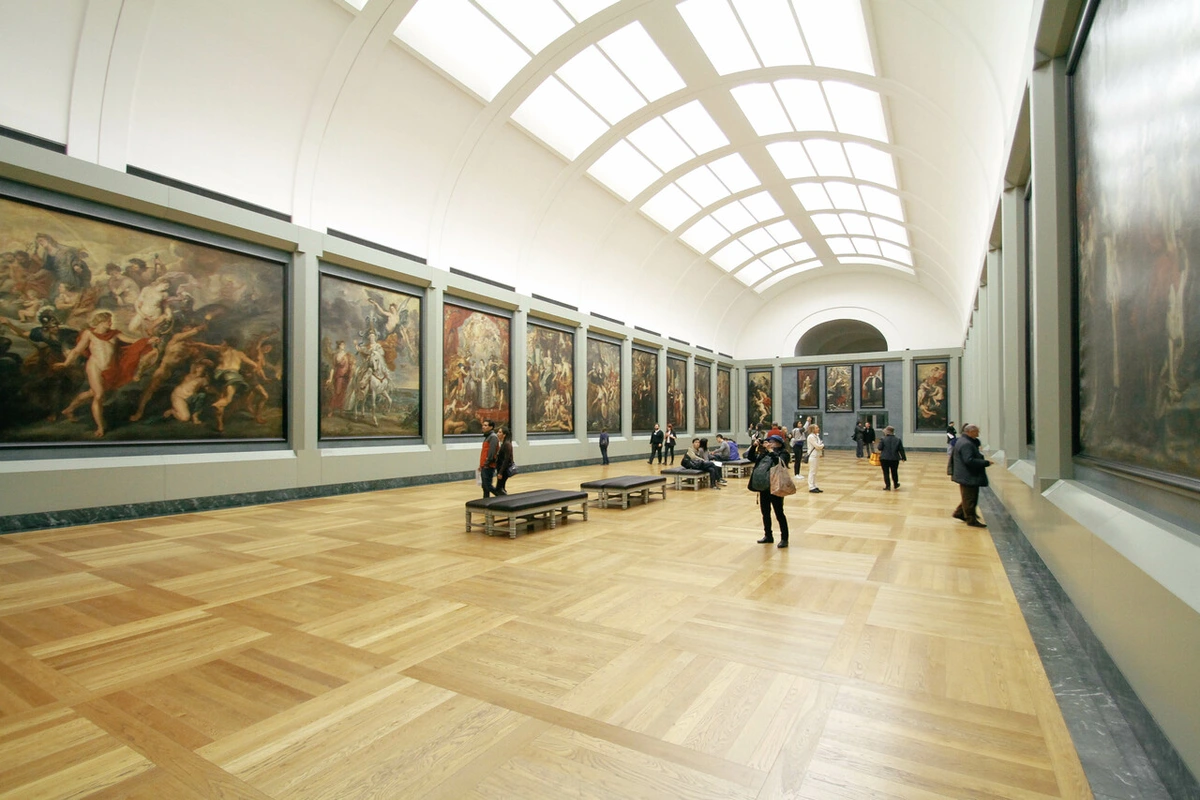
- Thriving Gallery Scene: Beyond museums, a dynamic network of commercial galleries (from global powerhouses like Gagosian or David Zwirner to mid-tier and emerging spaces), independent non-profits, and artist-run spaces indicates a healthy, evolving art ecosystem. These commercial spaces, sometimes called blue-chip galleries when they represent the most famous and commercially successful artists, are where the contemporary pulse often beats strongest, offering a chance to see and potentially buy art from living artists. For you, this means discovering what's happening now, seeing art that feels fresh and relevant, and potentially even meeting artists or gallerists. It's where you find the energy of the current scene. Check out some of the renowned galleries worldwide.
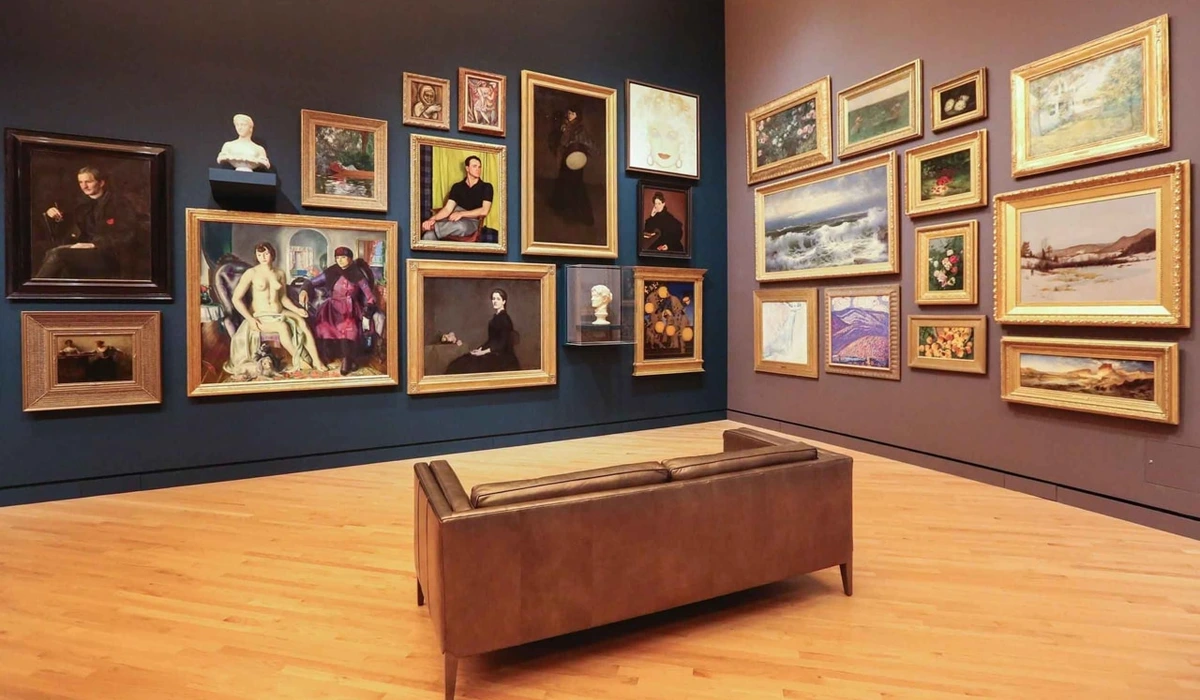
- Historical Significance: Cities that were epicenters of major art movements (like Renaissance Florence or Impressionist Paris) offer a unique connection to art history and the chance to see works by the greatest artists ever in context. Understanding the history of art can really enrich your visit, providing layers of meaning to the works you encounter. For you, this is like stepping into a living history book, seeing the art in the very places it was created and first seen. It adds a profound layer of understanding.
- Contemporary Buzz: A strong contemporary scene signals a city engaged with the art of today. Look for numerous contemporary galleries, studios, prominent living artists (perhaps even some local heroes less known globally but vital to the city's pulse), significant street art, and major international art fairs like Art Basel or Frieze (get tips for visiting art fairs here). Artists creating vibrant, colorful abstract works, like those available here, often thrive in these environments, pushing boundaries and reflecting current times. For you, this means seeing art that challenges, provokes, and reflects the modern world. It's exciting, sometimes confusing, and always stimulating. (A quick note: Art Fairs like Art Basel or Frieze are primarily commercial events focused on buying and selling, while Biennials are large-scale exhibitions focused on showcasing contemporary art, often with a specific theme. Both are major events, but offer different experiences for the visitor. Think of a fair as a marketplace and a biennial as a curated exhibition on a massive scale).
- Art Education & Institutions: The presence of influential art schools and academies often fuels the local creative scene. Think of the historical weight of the École des Beaux-Arts in Paris (known for its classical tradition), the experimental energy fostered by the Universität der Künste (UdK) in Berlin (often focused on conceptual and new media art), or the classical foundations of the Accademia di Belle Arti di Firenze. Their graduates often populate the local galleries and studios, keeping the scene fresh and dynamic and contributing to the city's unique artistic identity. For you, this means a constant influx of new ideas and talent, potentially leading to exciting student shows or a vibrant, youthful energy in certain districts. It's where the future of art is being shaped.
- Atmosphere & Accessibility: Is the city inspiring? Is art integrated into public spaces? Are galleries and museums easily accessible and navigable? (More on that elusive 'atmosphere' later! And we'll touch on accessibility practicalities further down). The ease of getting around and the general feeling of the city contribute massively to the overall art travel experience. For you, this is about the practical reality of your trip – how easy is it to get from A to B? Does the city feel welcoming or intimidating? Does the environment itself feel creative and inspiring? Sometimes, just the light in a city, or the way the buildings are arranged, feels like art in itself.
- Public Art & Street Art: Increasingly important, the presence of sanctioned murals, independent graffiti, sculptures in squares (like the temporary installations during Frieze Sculpture in London's Regent's Park), and art integrated into the urban fabric adds another layer of artistic discovery outside traditional venues. Sometimes you find amazing work just wandering around, turning the city itself into a gallery. For you, this offers free, accessible art everywhere you look, often reflecting the city's current social and political landscape. It's art that meets you where you are, often raw and unfiltered. I remember being completely captivated by the sheer scale and detail of some murals in Berlin – they felt like giant paintings demanding your attention on the street.
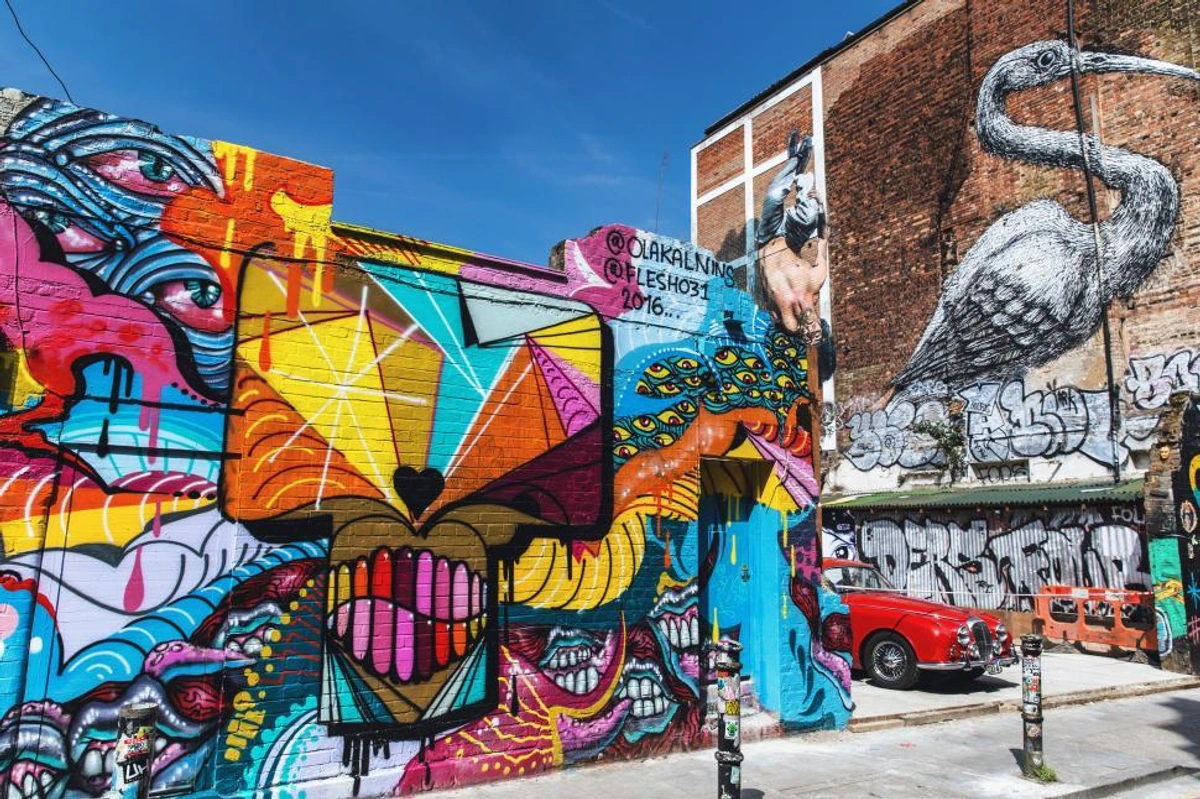
- Special Events & Biennials: Major recurring events like the Venice Biennale, documenta (Kassel), Manifesta (location varies), or major photography festivals (Paris Photo, Les Rencontres d'Arles, Unseen Amsterdam) draw the global art world, offering unique, concentrated, and often cutting-edge experiences that temporarily transform a city's artistic landscape. Planning around these can offer incredible immersion, but also means bigger crowds and higher prices. Don't forget significant performance art festivals too, like Impulstanz in Vienna or events linked to venues like HAU Hebbel am Ufer in Berlin. For you, these are opportunities to see the absolute cutting edge, experience art on a grand scale, and be part of a global art moment. They can be overwhelming, but also incredibly rewarding.
- Art Market Hubs: Cities with major auction houses (like Sotheby's, Christie's in London & Paris), influential commercial galleries (think the blue-chip giants in Mayfair or Le Marais), and significant art fairs are crucial centers for the art trade. These hubs attract international collectors, gallerists, and artists, influencing gallery programming and bringing high-value works to the city. Understanding these dynamics can be interesting even for non-buyers, and essential for collectors navigating the secondary art market or considering how to buy art. For you, the visitor, this means a concentration of high-quality galleries, often showcasing internationally renowned artists. While you might not be buying a million-dollar piece, seeing these spaces gives you insight into the top tier of the art world and the trends that influence the broader scene. It's where the big deals happen, and where you see art treated as a global commodity, which is a fascinating, if sometimes bewildering, aspect of the art world.
- Architectural Significance: Let's face it, sometimes the buildings housing the art are artworks themselves! Cities showcasing distinct architectural movements like Art Nouveau (think Victor Horta in Brussels, Otto Wagner in Vienna, or Hector Guimard's Metro entrances in Paris) or the influential Bauhaus legacy (visible across Germany, especially Berlin, Weimar, and Dessau) offer another layer of aesthetic appreciation. Iconic modern and contemporary structures, like Zaha Hadid's MAXXI in Rome or Norman Foster's Reichstag dome in Berlin, also shape the city's artistic identity. For you, this means the city itself is a gallery, offering visual inspiration and historical context around every corner. It's a different way to 'read' a city, and sometimes just looking up is enough.
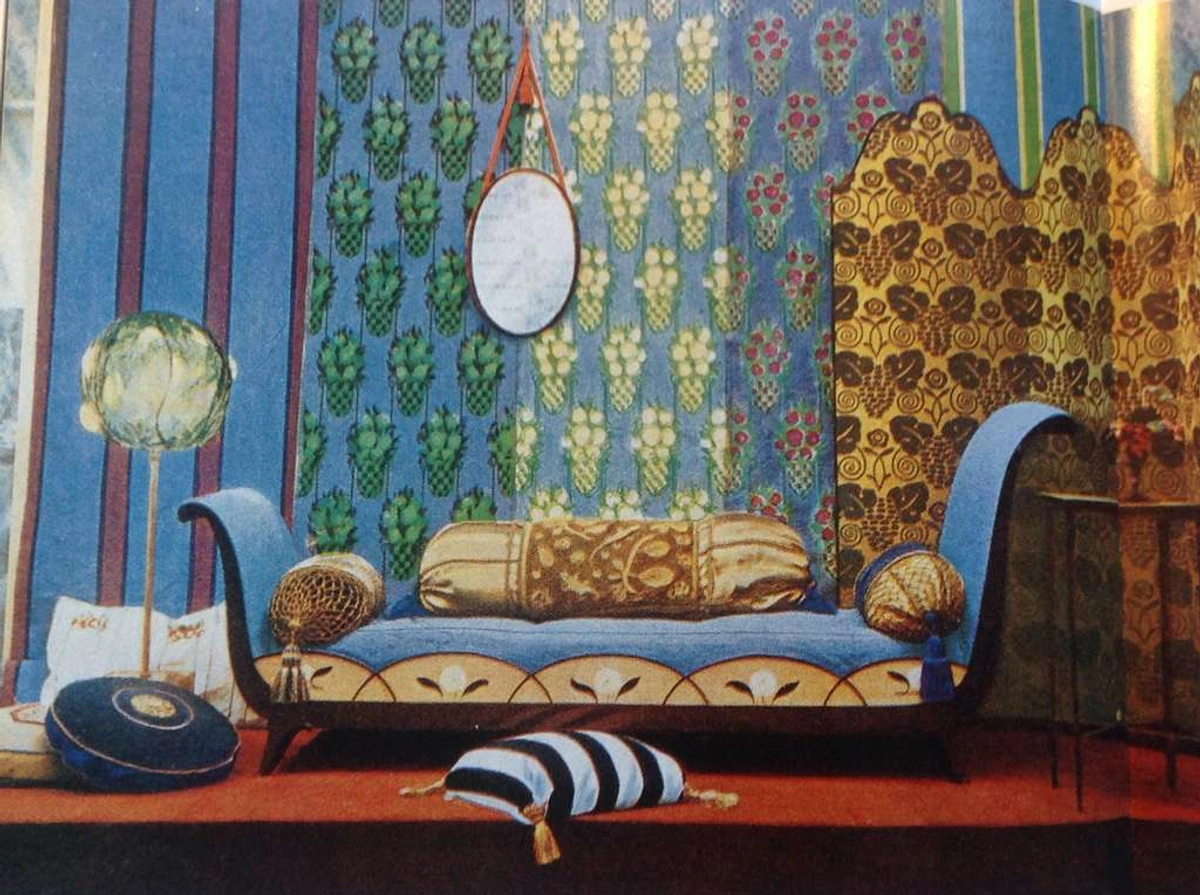
- Affordability: This might seem less 'artistic' than museums or galleries, but it's incredibly practical. The cost of accommodation, food, transport, and even museum entry fees can significantly impact the length and depth of your trip. A more affordable city allows you to stay longer, visit more smaller galleries (which are often free), attend local events, and generally immerse yourself more deeply without breaking the bank. It opens up the scene beyond the major, expensive institutions and lets you explore the local pulse.
Top Contenders for Best Art City in Europe: A Deeper Dive
Let's explore some of the strongest candidates, each offering a distinct flavour and unique artistic ecosystem. This is where the criteria meet the concrete, and where the 'vibe' really comes into play. Which one calls to you?
1. Paris, France
- Overview: The historical heart of the European art world for centuries, Paris retains an undeniable allure with its iconic museums and chic gallery scene. It's a city that lives and breathes art history, while also nurturing a vibrant contemporary pulse. The vibe here feels like stepping into a beautifully curated, slightly intimidating, but utterly captivating grand dame. It's polished, profound, and perpetually inspiring. My personal feeling in Paris is one of being surrounded by effortless beauty and history, but also a slight pressure to 'get' it all, which is impossible. It feels like art is woven into the very air, but sometimes feels a little... untouchable. Like you're walking through a perfectly preserved painting.
- Strengths: Unrivalled depth in Old Masters (Louvre) and Impressionism/Post-Impressionism (Orsay); a world centre for modern art (Pompidou); strong historical connections to countless art movements (from Romanticism to Cubism); home to the influential École des Beaux-Arts and numerous other art schools like the Académie Julian (historically significant for attracting international artists) and the EnsAD (École nationale supérieure des Arts Décoratifs), which fuel the city's artistic output and attract talent. The sheer density of masterpieces is staggering. It's a major art market hub, particularly for historical and modern art, with significant auction houses and galleries attracting global buyers and sellers. The contemporary scene here, while strong, often feels like it's in dialogue with the city's immense history, sometimes leaning towards established names or conceptual work with a historical grounding. Performance art and video art are present but perhaps less central than in Berlin.
- Must-Visit Institutions: Louvre Museum (Mona Lisa, Venus de Milo, vast collection spanning millennia – trying to see it all is a fool's errand, trust me, I've tried and ended up just wanting a croissant), Musée d'Orsay (Impressionist/Post-Impressionist masterpieces in a stunning former train station – seeing Monet's water lilies or Van Gogh's self-portraits here feels like a pilgrimage), Centre Pompidou (leading modern/contemporary art museum and cultural centre, known for its radical architecture), Musée Rodin (sculpture in a beautiful setting), Musée Picasso Paris (extensive collection in a historic mansion), Musée Marmottan Monet (major collection of Monet, including Impression, soleil levant). Don't overlook significant private foundations like the Pinault Collection (at the Bourse de Commerce and Palazzo Grassi/Punta della Dogana in Venice) or the Fondation Louis Vuitton (striking Frank Gehry building). Find more options in our guide to the best galleries in Paris.
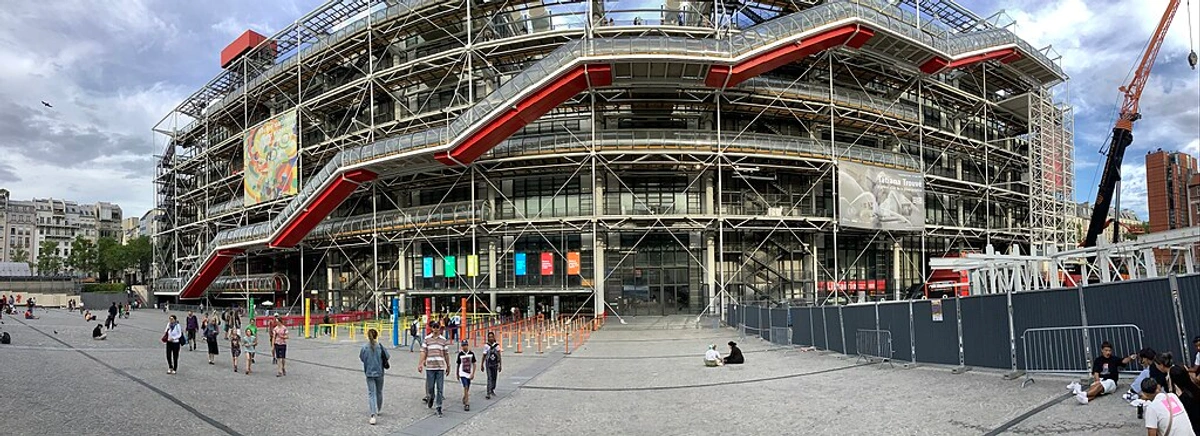
- Gallery Scene: Concentrated in areas like Le Marais (packed with contemporary powerhouses like Thaddaeus Ropac, Perrotin, Templon, alongside younger spaces) and Saint-Germain-des-Prés (classic dealers and modern art). Increasingly interesting galleries are also found in Belleville and the 8th arrondissement near the Champs-Élysées. The scene is vast and requires focused exploration. The market aspect here means you'll see a lot of high-value, internationally recognized work. Photography galleries are numerous, often focusing on fine art and fashion photography, supported by institutions like the Maison Européenne de la Photographie (MEP).
- Other Art Experiences: Artistic history in Montmartre, developing contemporary spaces in Belleville, Palais de Tokyo (experimental contemporary art). Check out the stunning stained glass at Sainte-Chapelle – architecture as immersive art. Explore Hector Guimard's iconic Art Nouveau Metro entrances. Public sculpture is integrated throughout the city's parks and squares. Street art is growing, particularly in the 13th arrondissement with large-scale murals, and more independent work in areas like Belleville. While not as raw as Berlin, you'll find pieces that add a modern layer to the historic walls.
- Local Vibe & Digging Deeper: Beyond Le Marais, explore the smaller galleries popping up in Belleville or the 13th arrondissement for a less polished, more emerging feel. Look for "vernissages" (opening nights) listings online (check resources like l'Officiel des Galeries & Musées or ArtRabbit) – a great way to see new work and soak up the local scene (often with free wine, a classic struggling-art-lover bonus!). Don't underestimate museum gift shops for unique prints and art books. Paris can feel overwhelming, but focusing on one district or era per day helps. I always find myself just wandering, getting lost in the beauty, and stumbling upon unexpected artistic moments – like the time I found a tiny, dusty shop selling antique prints near the Seine that felt like stepping back 100 years. The vibe is one of deep history and effortless style.
- Pros: Unbeatable historical collections, iconic landmarks, romantic atmosphere, strong gallery scene, deep connection to art history, major art market hub, excellent photography scene.
- Cons: Can be very crowded, especially at major sites (the Mona Lisa scrum is legendary, and frankly, a bit absurd); contemporary scene sometimes feels secondary to its history; can be expensive.
2. London, UK
- Overview: A truly global hub offering staggering diversity, from encyclopedic national collections to a world-leading contemporary art market. London is a city of contrasts, where centuries-old institutions sit alongside cutting-edge contemporary spaces. The vibe is dynamic, sprawling, and constantly reinventing itself – a bit like a massive, energetic collage. My feeling in London is one of boundless energy and opportunity, but also the need to constantly navigate its sheer scale. It feels like art is everywhere, but you have to actively seek it out across different neighbourhoods. And the fact that so many major museums are free? That's a game-changer.
- Strengths: Exceptional free national museums (National Gallery, Tates); a powerhouse for international contemporary art (Tate Modern); a dominant commercial gallery scene with global players; significant history of British art (Tate Britain), including key figures like the School of London (think Lucian Freud, Francis Bacon, Frank Auerbach). It's a major centre for the art market, with significant auction houses and fairs like Frieze, attracting international collectors and driving global trends. Influential art schools like the Royal College of Art (RCA) and Goldsmiths, University of London contribute significantly to the city's experimental and critical contemporary scene. Explore the best art galleries in London. The contemporary scene here is incredibly market-driven and international, showcasing big names and global trends, but also nurturing experimental practices, particularly in performance and video art, often seen in spaces like the Tate Modern's Tanks or the ICA.
- Must-Visit Institutions: The National Gallery (European Masters, free entry is a huge plus – you can pop in just to see a single Vermeer or a few Turners, which is a luxury), Tate Modern (international modern/contemporary, strong on video and performance art, housed in a former power station – the Turbine Hall installations are always a spectacle), Tate Britain (British art from 1500 to today), Victoria and Albert Museum (V&A) (world's leading museum of art and design – prepare to get lost in decorative arts, fashion, and incredible objects), British Museum (global art/artifacts - check out Norman Foster's Great Court), Saatchi Gallery (contemporary art, often showcasing emerging artists). The National Portrait Gallery is also excellent. Photography is well-represented at the Photographers' Gallery and within museum collections, with a focus spanning documentary, fine art, and commercial photography.
- Gallery Scene: Major clusters in Mayfair (blue-chip commercial giants like Gagosian, Hauser & Wirth, White Cube – window shopping here is an art form in itself), Shoreditch/East London (contemporary, street art, younger galleries), Fitzrovia, and growing areas in South London (Peckham, Deptford – often more experimental and artist-run spaces). The sheer scale means you could spend weeks just gallery hopping. As a major art market hub, London's galleries are where global trends are often set and seen, attracting international collectors and influencing the broader art world.
- Other Art Experiences: Vibrant street art scene (especially Shoreditch, Camden, Brixton – look for large murals and smaller pieces tucked away). Artists like Banksy have left their mark, but the scene is constantly evolving with new talents. Major auction houses (Sotheby's, Christie's), Frieze London art fair (including the excellent Frieze Sculpture park in Regent's Park annually), numerous public sculptures (check the Fourth Plinth commissions in Trafalgar Square). The city's architecture is a mix of historical and modern marvels. Art and architecture tours are readily available. Performance art is particularly strong, with dedicated venues and experimental practices thriving.
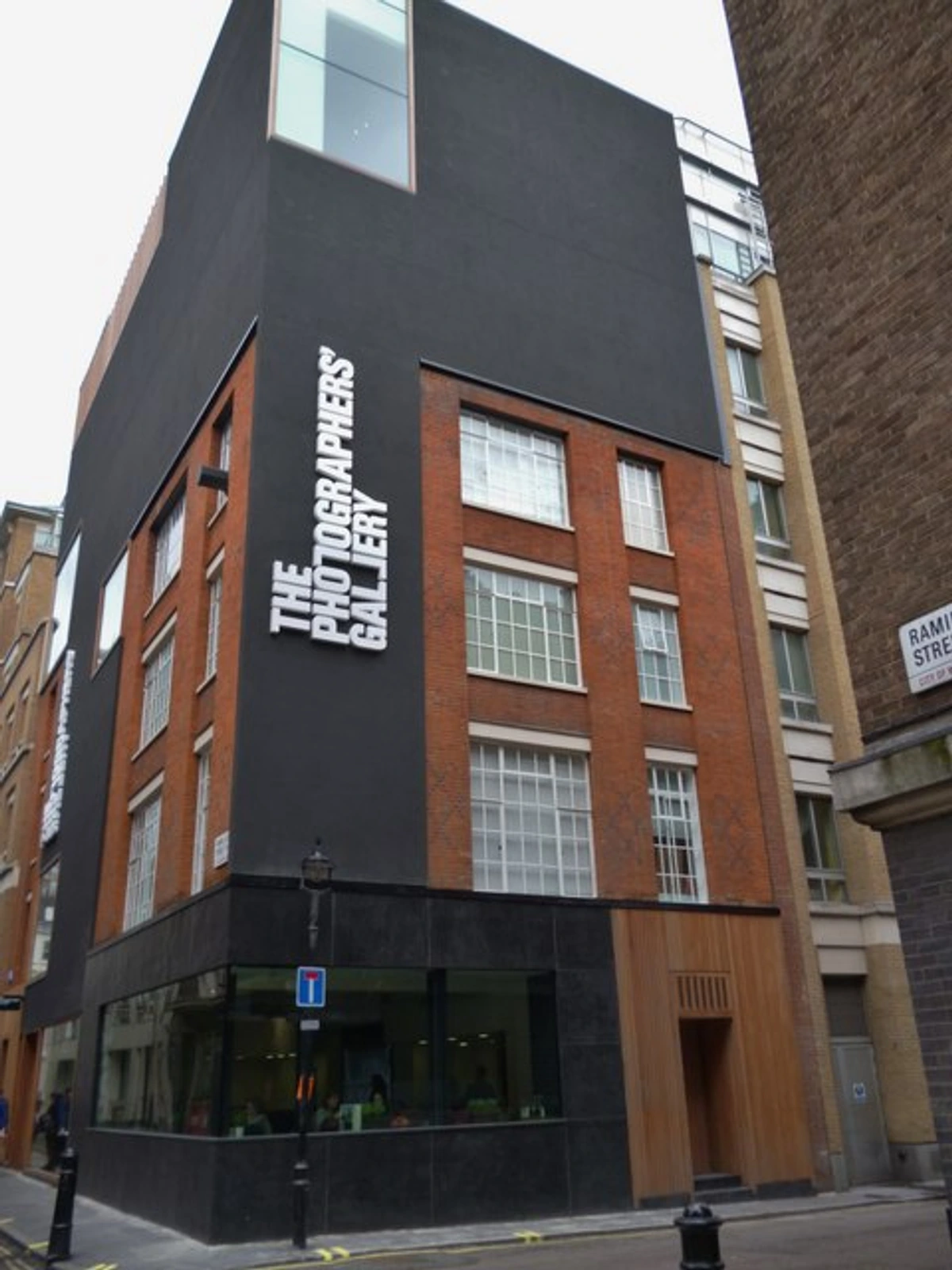
- Local Vibe & Digging Deeper: Catch the 'First Thursdays' event where East London galleries stay open late – it's a great buzz. Explore the less glossy but often more experimental scenes in Peckham or Deptford. Check listings in magazines like Time Out London or online art calendars like ArtRabbit for independent shows and open studios. The sheer scale means you have to plan, but getting lost can lead to brilliant finds. I love how accessible the major museums are here – you can pop in for an hour and see a few masterpieces without feeling pressured to see everything. It makes art feel less like a chore and more like a part of daily life. The vibe is one of boundless energy and endless possibility.
- Pros: Incredible variety and quality across all periods, many free major museums, dynamic contemporary market, strong performance/video art presence, major art market hub, excellent photography scene, influential art schools.
- Cons: City is vast and requires planning; special exhibitions can be expensive; can feel overwhelming due to size and density.
3. Berlin, Germany
- Overview: Widely regarded as Europe's contemporary art capital, known for its experimental spirit, affordability (historically), and high concentration of working artists, many drawn by institutions like the Universität der Künste (UdK) and the Kunsthochschule Weißensee. Berlin feels like a city where art is constantly being made and debated. The vibe is raw, edgy, and fiercely independent – a place where creativity feels essential, not just decorative. My personal feeling in Berlin is one of constant creative friction and discovery; it feels less polished than Paris or London, but more alive with current ideas and debates. It's a city that doesn't shy away from difficult histories, and its art scene reflects that. It feels like anything is possible here, artistically speaking.
- Strengths: Dominant contemporary art scene with countless galleries and project spaces; significant street art culture; major historical museums on Museum Island; relatively affordable compared to Paris/London; a hub for performance and video art. Significant Bauhaus architectural legacy nearby (Dessau/Weimar) and within the city (e.g., Bauhaus Archive / Museum of Design - check status). The city's history is deeply intertwined with its artistic output. It's a growing art market hub, particularly for contemporary work, attracting international collectors during events like Gallery Weekend. The contemporary art here often leans towards conceptual, political, and experimental practices, reflecting the city's history and its role as a melting pot for artists from around the world. Performance and video art are particularly strong, supported by dedicated venues and festivals.
- Must-Visit Institutions: Museum Island complex (Alte Nationalgalerie, Pergamonmuseum, Neues Museum, Bode-Museum, Altes Museum - covering everything from antiquity to 19th-century art), Hamburger Bahnhof – Museum für Gegenwart (contemporary art in a former train station, a must-see – I once saw an installation here that completely changed how I thought about space), Berlinische Galerie (modern/contemporary Berlin art, photography, architecture), KW Institute for Contemporary Art (cutting-edge contemporary exhibitions), Gropius Bau (major international exhibitions). Don't miss venues like C/O Berlin for photography or HAU Hebbel am Ufer for performance art. Photography is a major strength here, with institutions focusing on contemporary and documentary work, reflecting the city's history and social landscape.
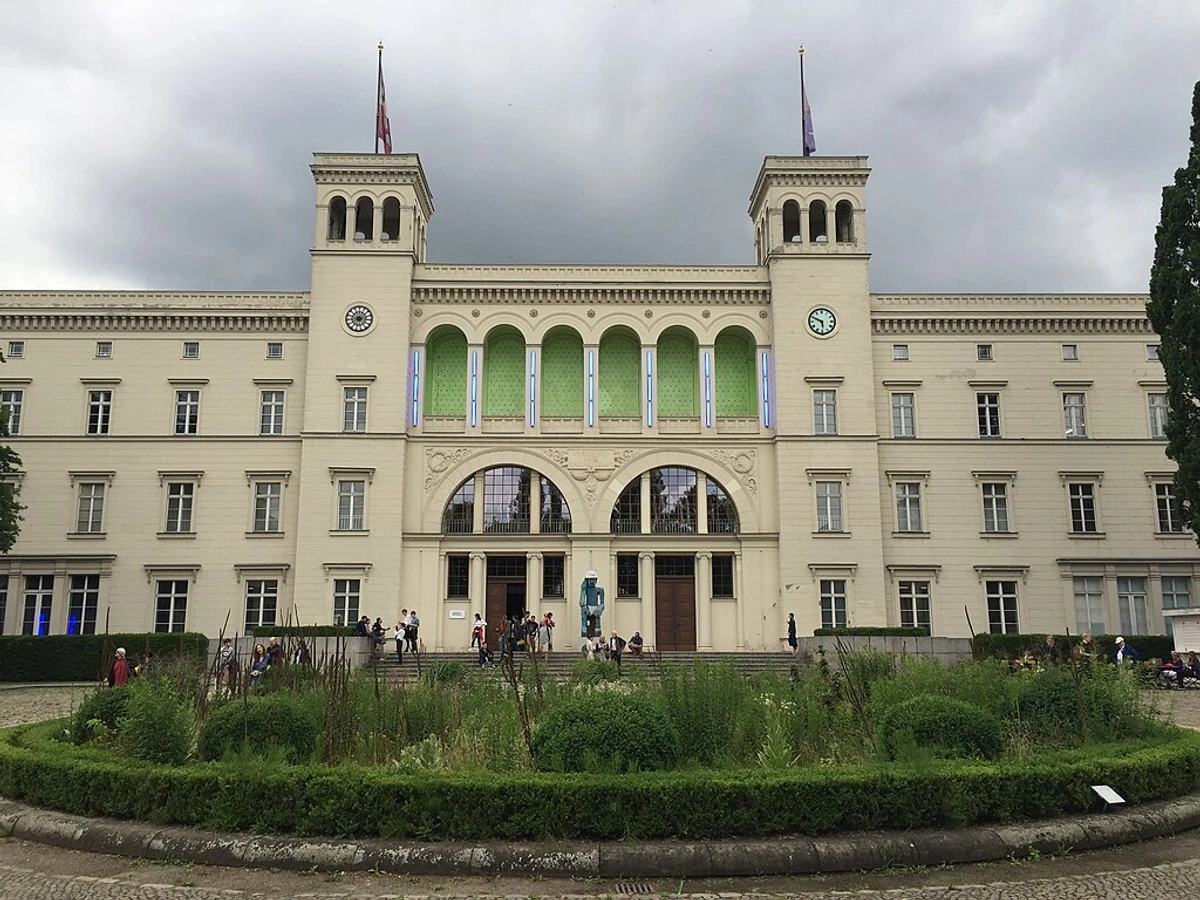
- Gallery Scene: Sprawling across districts like Mitte (more established international names like Neugerriemschneider, Eigen + Art, Sprüth Magers), Kreuzberg (grittier, independent, politically engaged spaces), Neukölln (emerging), and Charlottenburg (re-emerging high-end and historical focus); renowned Gallery Weekend Berlin event in spring. The sheer number of galleries and project spaces is astounding. The market here feels younger and more focused on contemporary discovery than the historical weight of Paris or London, attracting collectors interested in emerging talent. Photography galleries are numerous, often with a documentary or conceptual edge.
- Other Art Experiences: East Side Gallery (Berlin Wall murals – a powerful, if sometimes overwhelming, outdoor gallery), numerous artist studios ('Ateliers') and alternative spaces ('Projekträume'), Teufelsberg (former spy station with massive graffiti). Norman Foster's dome on the Reichstag Building. The city itself feels like a constantly changing exhibition space. Street art is everywhere, from massive murals to political stencils, particularly in Kreuzberg and Friedrichshain. Artists like Blu (though some work is now gone) or the collective Mentalgassi have contributed to the city's urban canvas. Art and architecture tours are a great way to explore the city's layered history. Performance art is deeply embedded in the city's cultural fabric, with experimental theatre and performance spaces throughout.
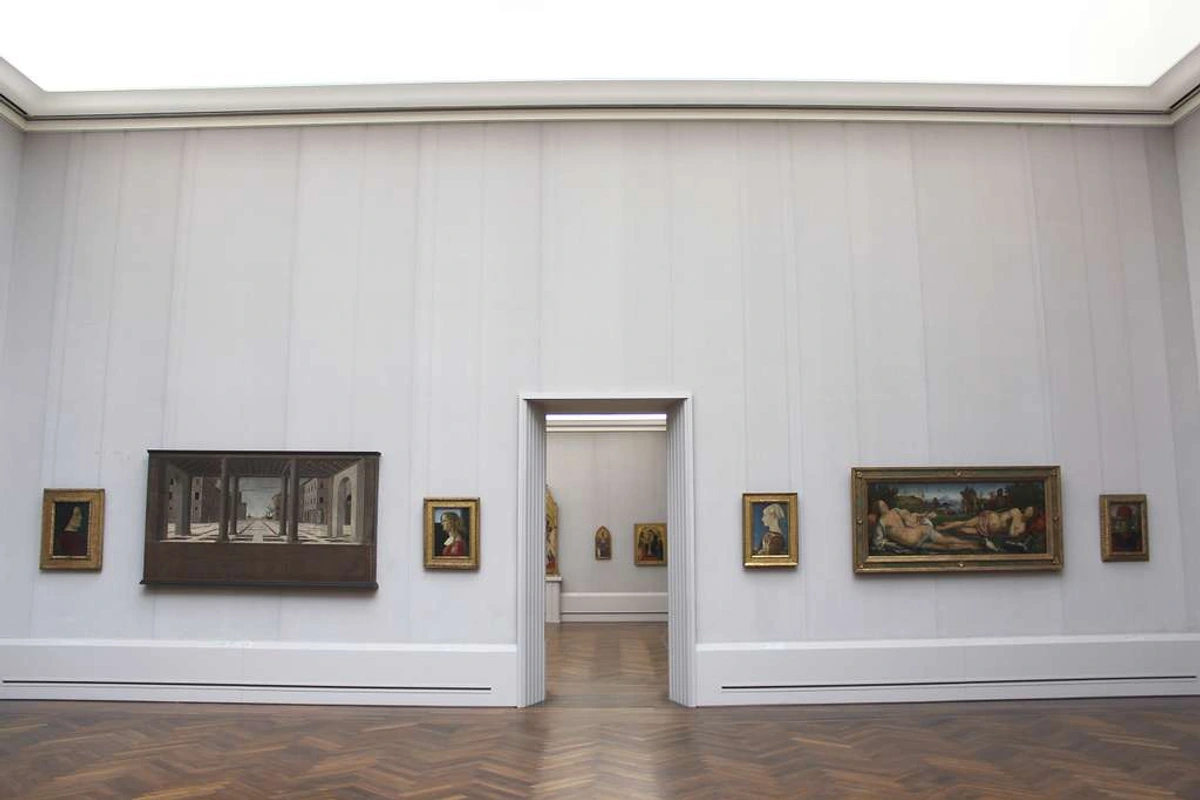
- Local Vibe & Digging Deeper: Berlin's art scene is spread out, which feels daunting but is part of its charm. Rent a bike! Look for Index Berlin or Berlin Art Link online for comprehensive listings and opening night schedules. Don't just stick to Mitte; Kreuzberg and Neukölln offer a raw, more lived-in art experience. The city feels less about polished perfection and more about process and experimentation. It's a place where you feel like art is being made, not just displayed. Check out performance venues and video art screenings. I always leave Berlin feeling creatively charged, even if my feet hurt from all the walking (or biking). The vibe is one of constant creation and fearless expression.
- Pros: Best city for cutting-edge contemporary art, vibrant and evolving scene, palpable creative energy, strong in photography, performance, video, relatively affordable, significant street art, influential art schools.
- Cons: Less depth in Old Masters compared to other capitals; city's art scene is very spread out; can feel a bit gritty (which some see as a pro!).
4. Rome, Italy
- Overview: A city where art and history are inextricably linked, offering masterpieces from antiquity, the Renaissance, and the Baroque era at every turn. Rome is an open-air museum, where stepping outside is an artistic experience in itself. The vibe is one of overwhelming historical grandeur, a constant reminder of the layers of civilization built upon each other. It feels eternal and deeply spiritual in places. My personal feeling in Rome is one of being constantly humbled by history; every corner reveals something ancient or beautiful, making the contemporary feel almost secondary, though it is certainly there if you look. Seeing a Caravaggio in the very church it was painted for? That's an experience that stays with you.
- Strengths: Unparalleled access to Ancient Roman art and architecture (Colosseum, Forum, Pantheon); heartland of the Baroque (Caravaggio, Bernini, Borromini); Vatican City's artistic treasures (Sistine Chapel, Raphael Rooms); Renaissance highlights. The art is woven into the very fabric of the city. While not a primary contemporary market hub, it has a growing scene, often engaging with the city's layered history through archaeological interventions or conceptual work that references the past. The Accademia di Belle Arti di Roma continues a long tradition of art education, influencing the local scene, though perhaps with a stronger link to classical techniques than some northern European schools.
- Must-Visit Institutions: Vatican Museums (including the Sistine Chapel, Raphael Rooms, ancient sculpture – booking essential! – standing under Michelangelo's ceiling is truly awe-inspiring, despite the crowds), Galleria Borghese (Bernini sculptures, Caravaggio paintings – booking essential and often months in advance! – seeing Bernini's Apollo and Daphne up close is worth the planning hassle), Capitoline Museums (ancient sculpture and Roman history, designed by Michelangelo), MAXXI - National Museum of 21st Century Arts (contemporary focus in a striking Zaha Hadid building), Palazzo Doria Pamphilj (incredible private collection in a stunning palace). Also consider the National Gallery of Modern and Contemporary Art (GNAM). Photography is present, but less of a central focus than in other cities, often seen within broader art collections.
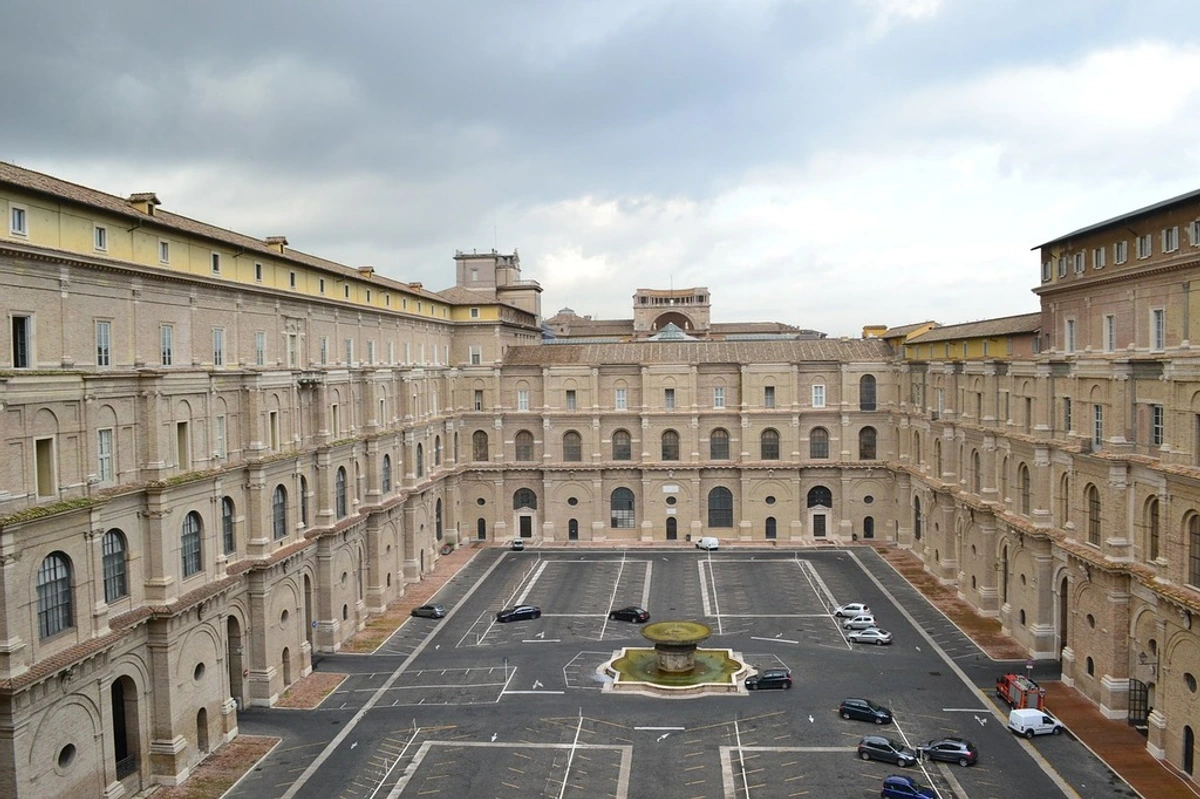
- Gallery Scene: A smaller but growing contemporary scene (check San Lorenzo or Trastevere districts for independent spaces) alongside traditional dealers specializing in older art. Galleries like Gagosian also have an outpost here, bringing international contemporary names. The contemporary scene is less centralized and requires more digging, often featuring artists who engage with the city's history or social context. The market here leans heavily towards historical art.
- Other Art Experiences: Masterpieces within churches (e.g., Caravaggio in San Luigi dei Francesi – seeing his paintings in the chapels they were made for is a powerful experience, Michelangelo's Moses in San Pietro in Vincoli, Bernini's Ecstasy of Saint Teresa in Santa Maria della Vittoria), archaeological sites like the Colosseum and Roman Forum, fountains as public sculpture (Trevi, Four Rivers). The sheer density of historical architecture is overwhelming. Just walking around is an art history lesson. Street art exists, often more politically charged or ephemeral, particularly in areas like Ostiense or Pigneto, sometimes featuring large-scale murals by artists like Blu (though some work has been removed). Performance art is less prominent than in Berlin or London but can be found in specific venues or festivals.
- Local Vibe & Digging Deeper: Rome is about absorption. Art isn't confined to museums; it is the city fabric. Look up! Look down! Peek into church doorways. The contemporary scene is less in your face but exists – seek out galleries in areas like Testaccio or Pigneto. The challenge isn't finding art, it's avoiding being overwhelmed. Prioritize, book ahead for the big hitters (Borghese!), and allow time for serendipitous discoveries. Check local listings via sites like RomaToday or gallery websites for openings. I always feel a profound connection to history here; it's like the past is constantly whispering to you through the art and architecture. The vibe is one of timeless beauty and layered history.
- Pros: Overwhelming depth of classical, Renaissance, and Baroque art integrated into the city fabric; stunning architecture; Vatican treasures; the city itself is a masterpiece; growing contemporary scene engaging with history.
- Cons: Contemporary art scene is less prominent globally than in Berlin or London; can be extremely crowded; requires significant advance booking for major sites.
5. Florence, Italy
- Overview: The undisputed cradle of the Renaissance, offering an astonishing concentration of masterpieces from this transformative period, nurtured by institutions like the historic Accademia di Belle Arti di Firenze. Florence is a pilgrimage site for anyone who loves this era. The vibe is intensely focused, almost reverent, dedicated to preserving and showcasing a specific, glorious moment in art history. My personal feeling in Florence is one of stepping into a dream of the past; it's beautiful and overwhelming, but sometimes feels a little too perfect, like a carefully preserved stage set, especially during peak season. Seeing David in person is an almost spiritual experience, despite the crowds.
- Strengths: The ultimate destination for Renaissance art lovers; home to iconic works by Michelangelo, Botticelli, Leonardo da Vinci, Raphael, Donatello, and more. The city's layout and atmosphere transport you back in time. The Accademia di Belle Arti di Firenze has a profound historical legacy, having trained many of the Renaissance masters, and continues to influence the city's focus on classical techniques, restoration, and art history. Find the best galleries in Florence here. The contemporary scene here is minimal compared to its historical weight, often focusing on traditional crafts, restoration, or contemporary work that directly references the Renaissance legacy. Performance and video art are not central focuses.
- Must-Visit Institutions: Uffizi Gallery (world's premier collection of Italian Renaissance painting, including Botticelli's Birth of Venus and Primavera, Leonardo's Annunciation – seeing these iconic works in person is breathtaking), Accademia Gallery (Michelangelo's David, unfinished Slaves – David is even more imposing than you imagine), Palazzo Pitti (vast palace complex housing several museums, including the Palatine Gallery with Raphael and Titian, and the Gallery of Modern Art), Bargello Museum (Renaissance sculpture, including works by Donatello and Michelangelo), Museo di San Marco (Fra Angelico frescoes in a former convent – a peaceful, spiritual experience). The Duomo and Baptistery are also artistic marvels. Photography is not a primary focus here.
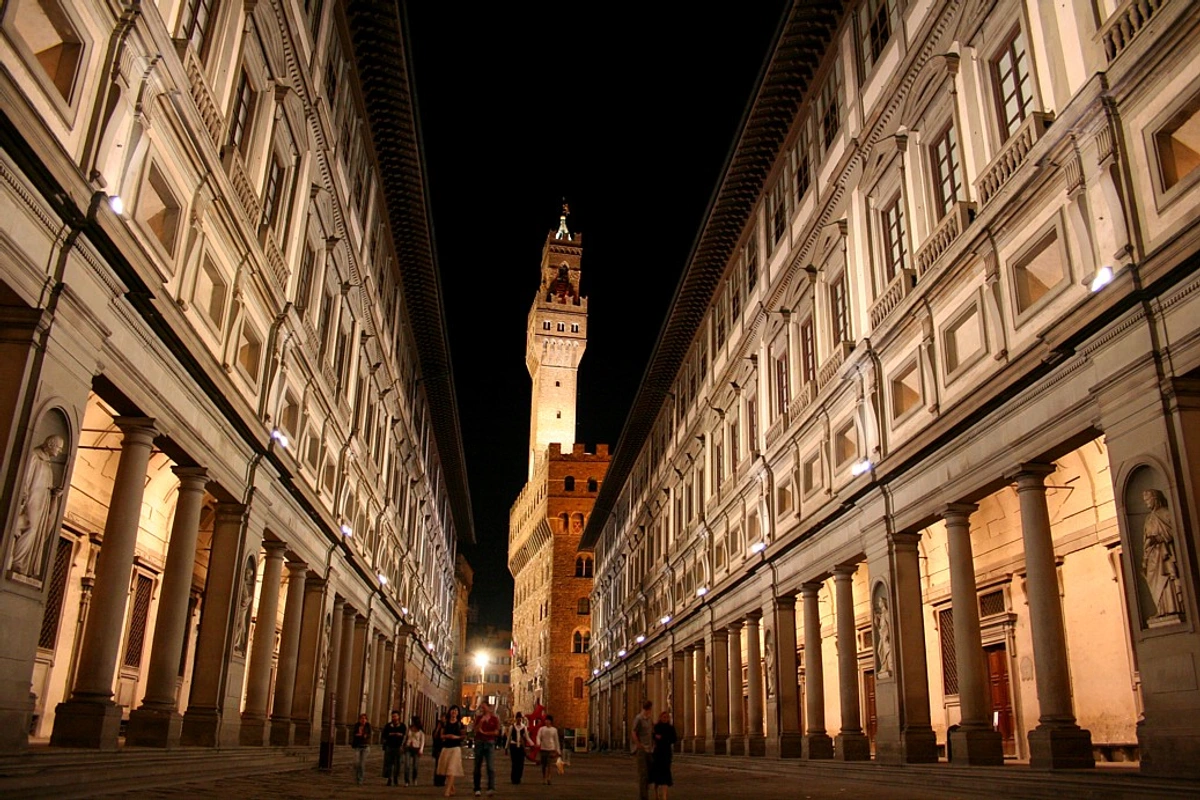
- Gallery Scene: Primarily focused on Renaissance art, traditional crafts, and restoration; a much smaller contemporary scene (check Oltrarno side for galleries like Eduardo Secci Contemporary or project spaces like BASE Progetti per l'arte or Le Murate Progetti Arte Contemporanea). The focus is definitely historical. The market here is dominated by historical art and reproductions.
- Other Art Experiences: Architectural wonders like the Duomo (climb it!) and Ponte Vecchio, artisan workshops (Oltrarno district – leather, paper, jewelry), Medici Chapels. The entire city centre feels like a UNESCO World Heritage artwork. The views from Piazzale Michelangelo are breathtaking. Street art is minimal and not a defining feature. Public sculpture is primarily historical.
- Local Vibe & Digging Deeper: Florence can feel like a beautifully preserved theme park during peak season. To find its pulse, cross the river to the Oltrarno district. Wander the backstreets, visit artisan workshops (some offer classes!) and find smaller trattorias. Look for contemporary art spaces like BASE Progetti per l'arte or Le Murate Progetti Arte Contemporanea for a modern counterpoint. Book Uffizi and Accademia months in advance if possible – seriously, do it. Check local cultural listings for smaller exhibition openings. Florence is intense, but seeing these masterpieces in their birthplace is an almost spiritual experience for art lovers. I remember sitting in a quiet corner of the Uffizi courtyard, just trying to process the sheer volume of genius inside. The vibe is one of historical density and artistic reverence.
- Pros: Essential for anyone passionate about the Renaissance; astonishing concentration of masterpieces; beautiful and walkable city centre; strong artisan tradition; historically significant art academy.
- Cons: Overwhelming focus on one period; can feel like an open-air museum with intense crowds; limited contemporary gallery scene.
6. Amsterdam, Netherlands
- Overview: Combines masterpieces of the Dutch Golden Age with a strong modern and contemporary offering, all within a charming, canal-laced cityscape. A key hub in a country brimming with art (check our best art cities in the Netherlands guide!). Amsterdam feels manageable and effortlessly cool. The vibe is relaxed, creative, and approachable – a city that wears its artistic heritage lightly while embracing the new. My personal feeling in Amsterdam is one of calm creativity; it's a city that feels easy to navigate and where art feels integrated into a pleasant, liveable environment, not just confined to grand buildings. Biking between museums feels like a mini-adventure.
- Strengths: Home of Dutch Masters like Rembrandt and Vermeer (Rijksmuseum); dedicated Van Gogh Museum; excellent modern and contemporary art and design museum (Stedelijk); a notable scene for photography and video art. The city's scale makes it easy to navigate between different artistic periods. Strong design heritage, influenced by institutions like the Gerrit Rietveld Academie, which fosters experimental and design-oriented practices. The contemporary scene here is diverse and well-supported, with a notable focus on photography, video, and design-influenced art, often seen in spaces like the Stedelijk or Foam. Performance art is also present, often linked to experimental venues.
- Must-Visit Institutions: Rijksmuseum (The Night Watch, The Milkmaid, vast collection of Dutch art and history – seeing The Night Watch is like meeting an old friend you only knew from photos), Van Gogh Museum (largest collection of Van Gogh's works – a deeply moving experience to follow his life through his paintings), Stedelijk Museum (modern/contemporary art and design, housed in a striking building), Anne Frank House (historical context, deeply moving – book months ahead), Rembrandt House Museum (Rembrandt's former home and studio). Don't miss Foam for photography or the Hermitage Amsterdam (large exhibition space). Photography is a major strength here, with institutions focusing on contemporary photography and Unseen Amsterdam being a key fair, highlighting new directions and emerging photographers.
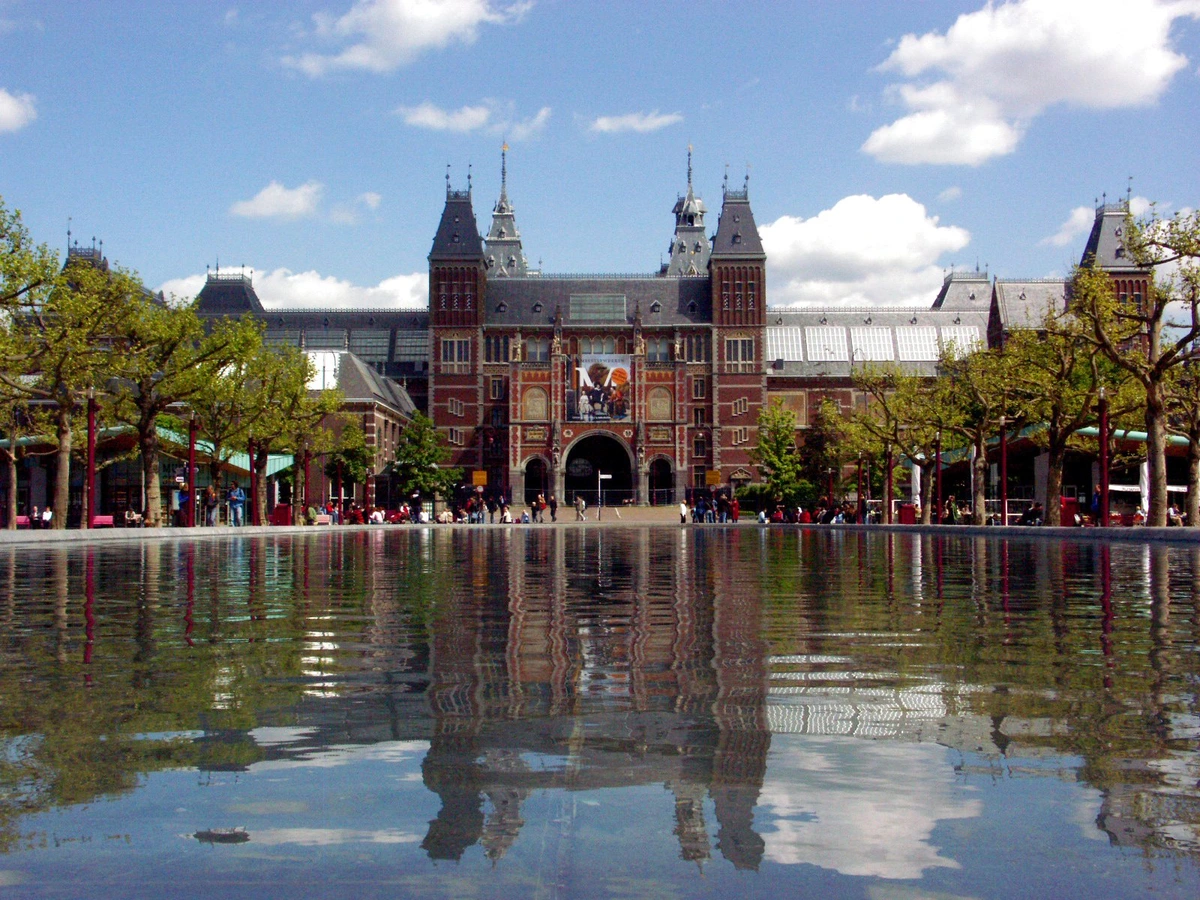
- Gallery Scene: Lively clusters in the Jordaan district (charming mix of galleries) and the Spiegelkwartier (antiques and art). Explore contemporary galleries like Annet Gelink Gallery or GRIMM around the Rozengracht or further out in Amsterdam Noord. The scene is diverse and approachable, often featuring Dutch and international artists with a focus on painting, sculpture, and photography. While not a global market giant like London, it has a solid, respected market presence, particularly for Dutch Masters and contemporary photography.
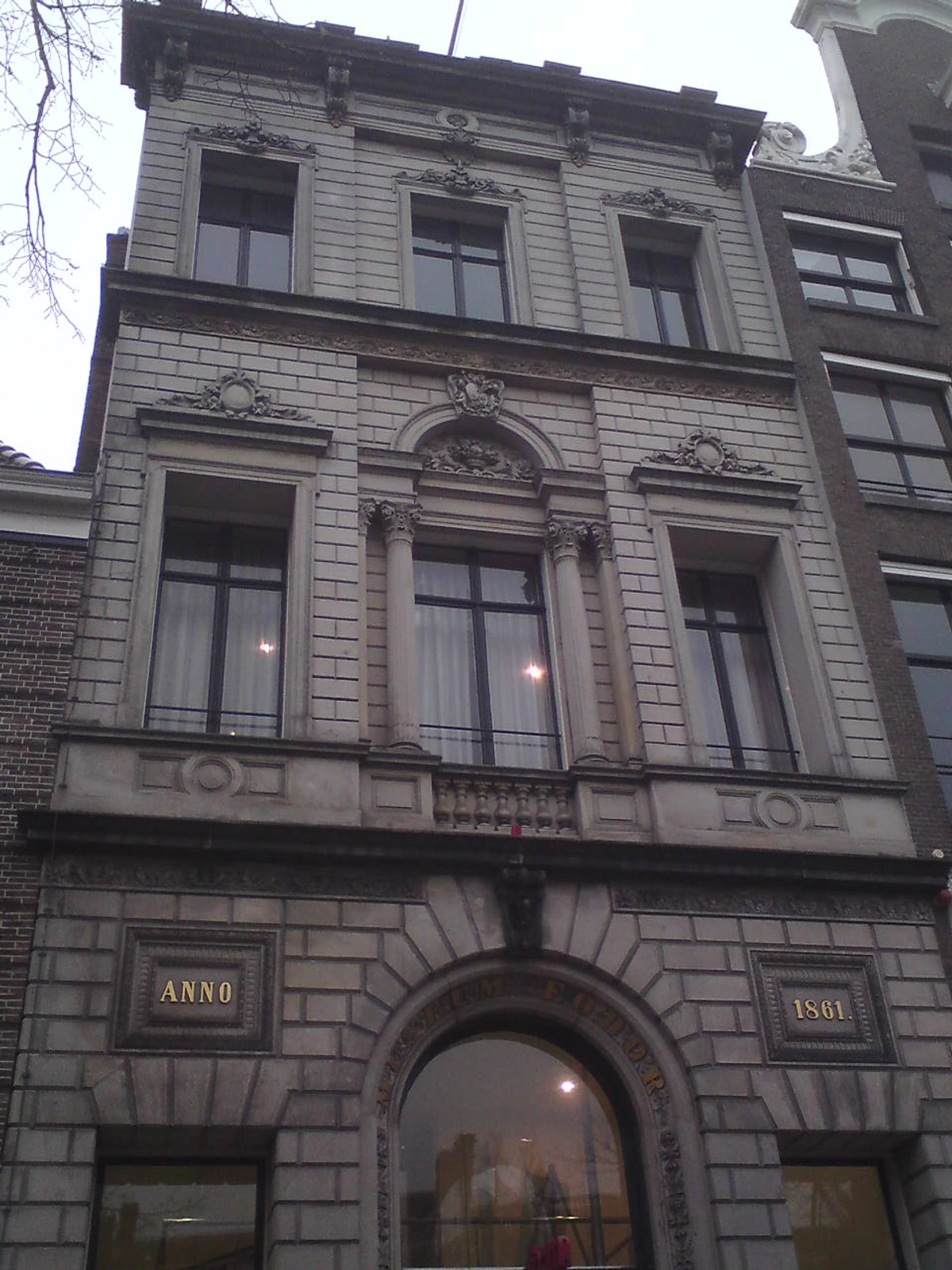
- Other Art Experiences: Beautiful canal houses (architectural gems), influential design scene, Moco Museum (Banksy, contemporary), photography at Foam, video art often featured at Stedelijk and smaller venues. Unseen Amsterdam photography fair is a major event. Public art is integrated throughout the city. Street art is present, often more decorative or character-based, particularly in areas like NDSM Wharf in Noord, which also hosts artist studios. Performance art is supported by venues like Frascati.
- Local Vibe & Digging Deeper: Amsterdam feels manageable and human-scaled. Renting a bike is the classic way to hop between museums and galleries. The Jordaan offers charming wandering alongside its galleries. Check out photography hub Foam or look for shows at independent spaces like W139 or galleries in the growing Noord district (take the free ferry!). The city blends its history seamlessly with a forward-looking creative spirit. Look for gallery opening listings on sites like Amsterdam Art. I love how easy it is to combine world-class museums with exploring smaller, independent spaces here – like finding a tiny gallery in the Jordaan showcasing beautiful, quiet abstract paintings after the intensity of the Rijksmuseum. The vibe is one of relaxed creativity and historical charm.
- Pros: Excellent balance of historical and modern/contemporary art, easily navigable, high quality museums, strong photography and design scene, charming atmosphere, influential art academy.
- Cons: Smaller scale overall compared to London or Paris; can be crowded in peak season.
7. Madrid, Spain
- Overview: Dominated by the "Golden Triangle of Art," three world-class museums offering an incredible journey through Western art, with a particular strength in Spanish masters. Madrid offers intense artistic immersion alongside a vibrant, late-night culture. The vibe is passionate, lively, and deeply rooted in Spanish identity, but increasingly open to international influences. My personal feeling in Madrid is one of intense cultural energy that spills out onto the streets; the art feels deeply connected to the city's identity and history, and the late-night culture means the energy lasts long after the museums close. Seeing Guernica in person is a truly powerful, almost overwhelming experience.
- Strengths: Unbeatable collections of Spanish Golden Age painters (Velázquez, Goya, El Greco at the Prado); Picasso's iconic Guernica (Reina Sofía); impressive survey of Western art (Thyssen). Strong focus on 20th-century Spanish art. A major hub for photography. It's a significant art market city, particularly during ARCOmadrid, attracting international galleries and collectors. Art education is supported by institutions like the Universidad Complutense de Madrid's Faculty of Fine Arts, contributing to the local contemporary scene. The contemporary scene here is growing and vibrant, with a strong focus on Spanish and Latin American artists, but increasingly international, often seen during the major fairs. Performance and video art are present but less central than in Berlin.
- Must-Visit Institutions: Prado Museum (Spanish masters, European painting – seeing Velázquez's Las Meninas is a must, it's endlessly fascinating), Reina Sofía Museum (focus on 20th-century Spanish art, including Picasso, Dalí, Miró – Guernica is incredibly powerful in person), Thyssen-Bornemisza Museum (a comprehensive survey of Western art, filling gaps between the Prado and Reina Sofía). Also consider the Sorolla Museum (Impressionist's former home/studio, a beautiful oasis) and CaixaForum Madrid (contemporary exhibitions in a striking building by Herzog & de Meuron). The Royal Palace also houses significant art. Photography is a major strength, hosting PhotoEspaña and having dedicated galleries focusing on historical and contemporary photography.
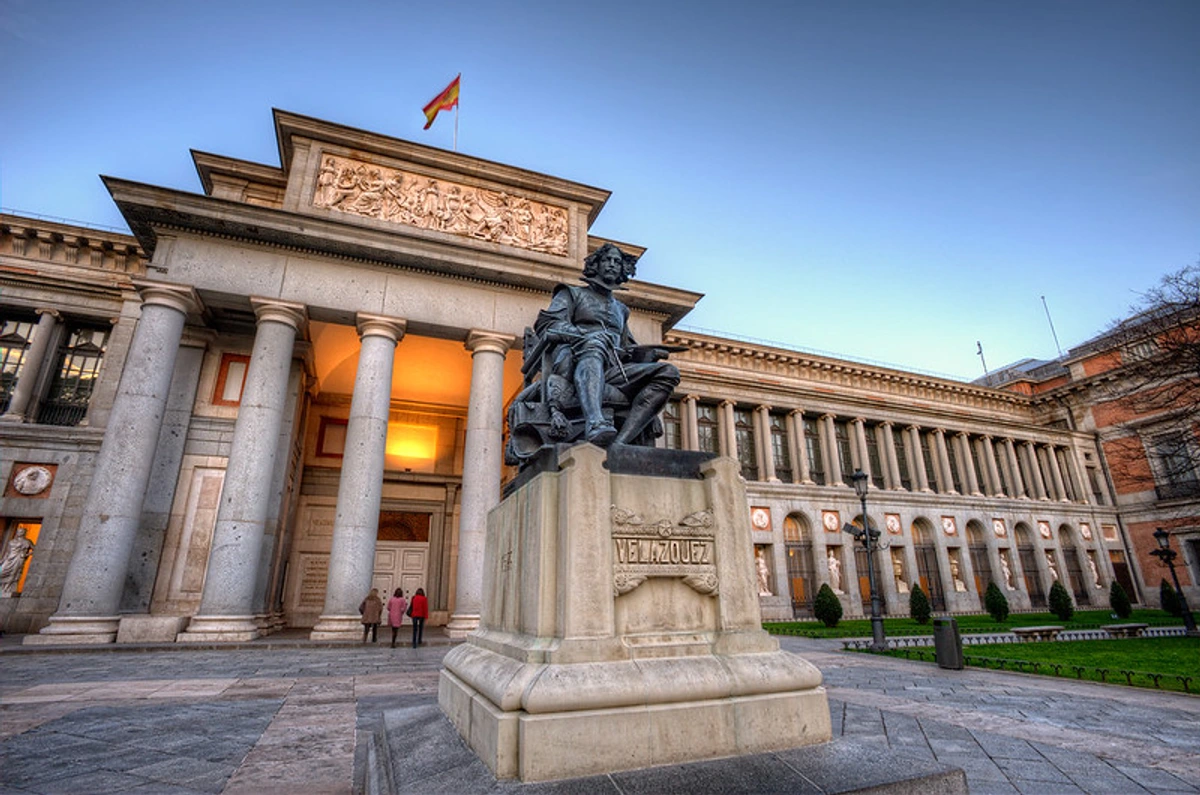
- Gallery Scene: Growing contemporary scene in districts like Salamanca (established galleries like Marlborough or Helga de Alvear), Malasaña (trendy, independent), and Lavapiés (alternative); major ARCOmadrid art fair in February and the important photography festival PhotoEspaña in summer. The scene is becoming increasingly international, attracting collectors and showcasing a mix of Spanish and global talent. The market is strong, particularly for Spanish art and during the major fairs.
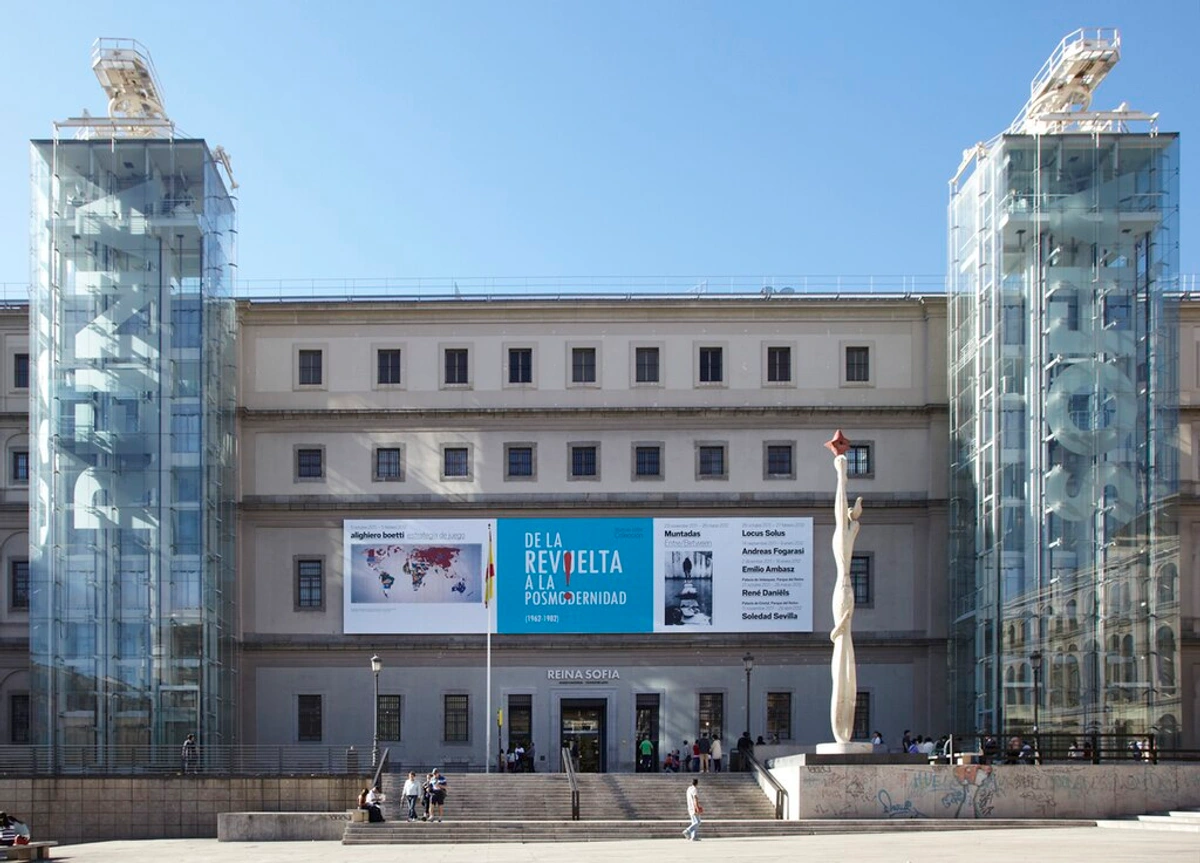
- Other Art Experiences: Royal Palace, vibrant nightlife and cultural scene (flamenco!), Matadero Madrid (cultural centre in former slaughterhouse, often hosting contemporary art/performance), impressive public sculptures. Retiro Park offers a beautiful setting for strolling and seeing public art. Street art is present, particularly in areas like Lavapiés, often with a political or social edge, featuring stencils and murals. Art and architecture tours are a great way to explore the city's layered history.
- Local Vibe & Digging Deeper: The Golden Triangle is magnificent but intense. Break it up! Explore the vibrant, slightly gritty Lavapiés for street art and alternative galleries, or the chic boutiques and galleries of Salamanca. Malasaña offers a younger, more bohemian gallery scene. Check local listings (like ArteInformado) for openings, often accompanied by tapas and wine – art and food, yes please! Madrid's energy extends beyond museums into its lively streets and squares. I love the rhythm of Madrid – museums in the morning, long lunch, siesta (maybe!), then galleries and nightlife. It feels like art is part of a broader, very social culture. The vibe is one of intense culture and vibrant life.
- Pros: The magnificent "Golden Triangle" offers days of exploration; strong focus on Spanish art history; lively city atmosphere; major art fairs, strong photography scene, growing contemporary scene, influential art education.
- Cons: International contemporary gallery scene is less established globally than in Berlin or London, though growing; can be very hot in summer.
8. Vienna, Austria
- Overview: An elegant city defined by its Imperial past and the groundbreaking art of the Vienna Secession movement around 1900. Rich in Art Nouveau architecture. Vienna offers a refined artistic experience, blending historical grandeur with modernist innovation. The vibe is sophisticated, elegant, and steeped in intellectual history, with a surprising undercurrent of experimentalism. My personal feeling in Vienna is one of refined beauty and intellectual depth; it feels like a city that values tradition but isn't afraid to push boundaries, particularly in its modernist and performance art scenes. Seeing Klimt's 'The Kiss' in the opulent Belvedere palace feels exactly right.
- Strengths: The world's best collections of Gustav Klimt (Belvedere) and Egon Schiele (Leopold); superb Old Masters collection (KHM); influential modern architecture (Otto Wagner) and design (Wiener Werkstätte). Strong connection to Art Nouveau (Jugendstil). Strong performance art scene, supported by institutions like Impulstanz festival and venues like Tanzquartier Wien. The Academy of Fine Arts Vienna has a long and distinguished history, contributing to both traditional and contemporary practices. The contemporary scene here is solid and growing, with a notable strength in performance art and conceptual work, often shown in dialogue with the city's rich history. Photography is present but not a primary focus.
- Must-Visit Institutions: Kunsthistorisches Museum (KHM) (Imperial Habsburg collections, including Old Masters like Bruegel, Rembrandt, Vermeer – the building itself is stunning), Belvedere (Upper Belvedere for Klimt's The Kiss – seeing it in person is a highlight, Lower for exhibitions, housed in stunning Baroque palaces), Leopold Museum (Schiele, Austrian Expressionism in the MuseumsQuartier – prepare for some intense emotions), Albertina (graphic arts, Impressionism to contemporary, housed in a former palace), mumok - Museum moderner Kunst Stiftung Ludwig Wien (modern/contemporary, also in MuseumsQuartier), MAK - Museum of Applied Arts (design, architecture, contemporary art). Don't miss the Secession Building itself (with Klimt's Beethoven Frieze). Photography is present but not a primary focus.
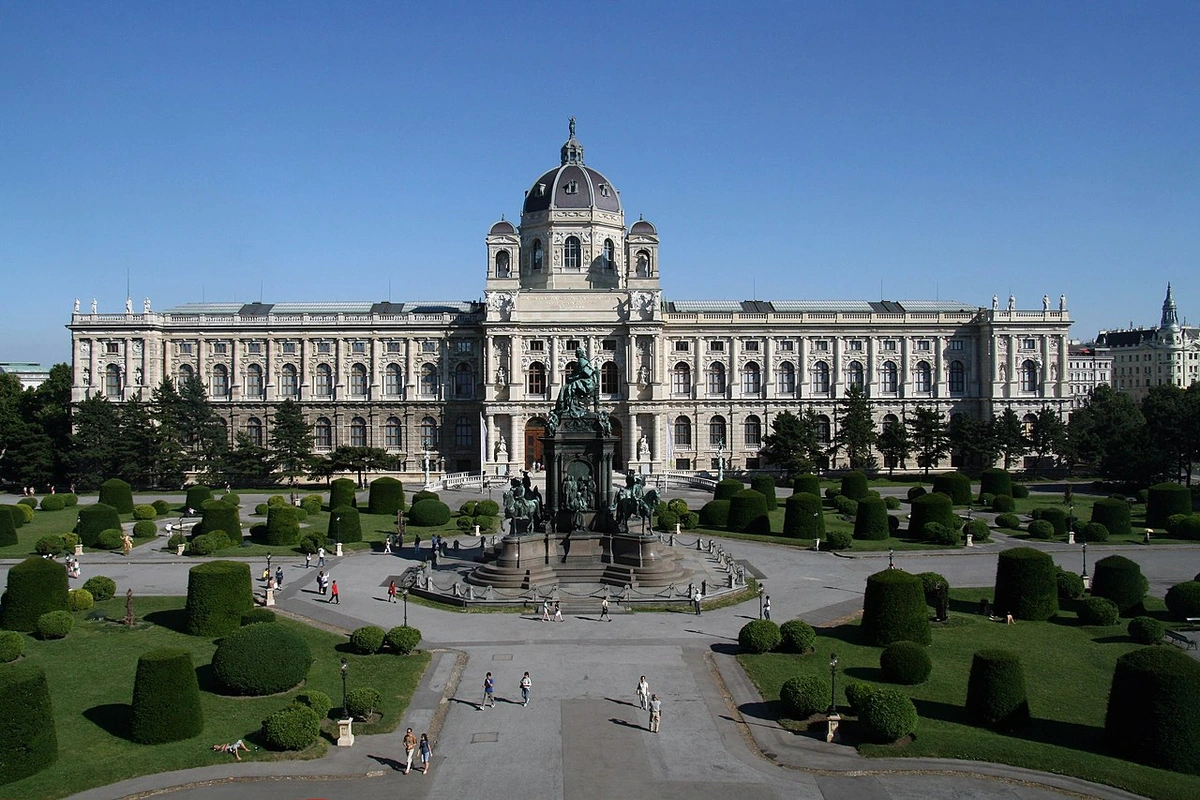
- Gallery Scene: A solid contemporary scene, particularly around Schleifmühlgasse near the Naschmarkt (home to galleries like Christine König Galerie, Gabriele Senn Galerie), and growing spaces in other districts. Check out viennacontemporary art fair in September. The scene is perhaps smaller than other capitals but high quality, featuring Austrian and international artists. The market here is strong, particularly for Austrian modernism and contemporary art.
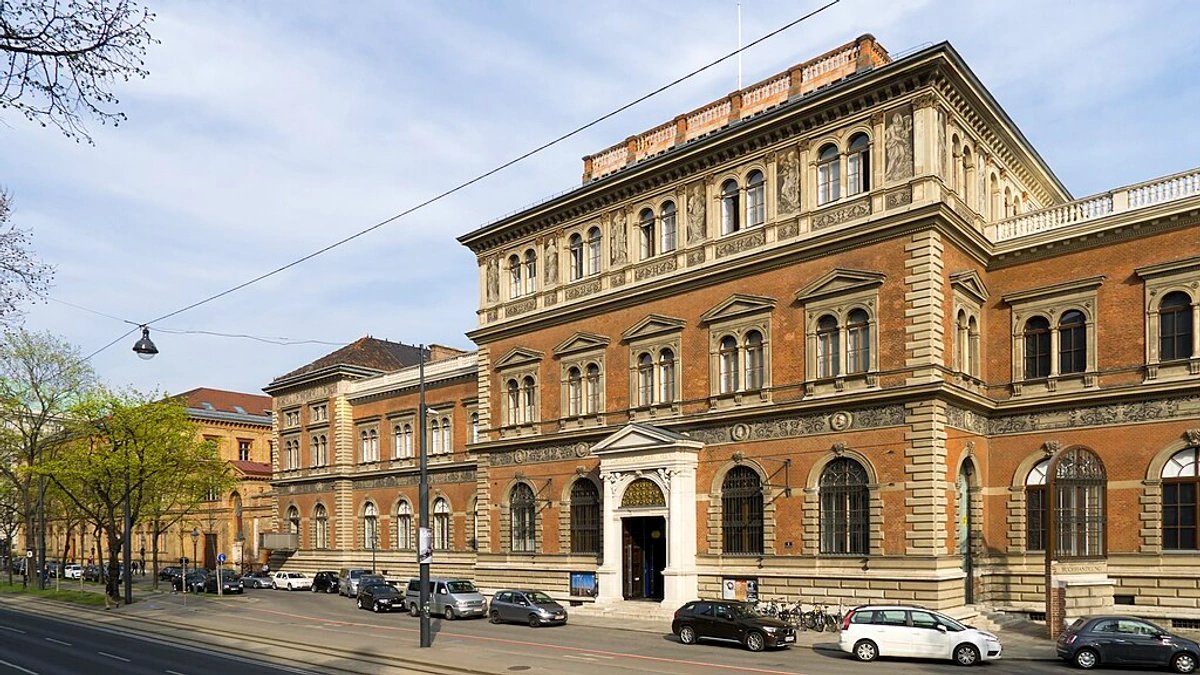
- Other Art Experiences: Secession Building (Klimt's Beethoven Frieze), Hofburg Palace complex, Hundertwasserhaus (quirky architecture), Otto Wagner's Stadtbahn Pavillons (Art Nouveau metro stations), traditional coffee house culture where artists and intellectuals once gathered (still great for sketching!). Impulstanz festival for performance art is a major highlight. The city's elegance is an art form in itself. Street art is less prominent than in other capitals, but you can find some pieces, often more illustrative or character-based. Public sculpture is abundant, reflecting the city's imperial history.
- Local Vibe & Digging Deeper: Vienna feels grand and historical, but the MuseumsQuartier provides a fantastic modern/contemporary hub with a relaxed courtyard atmosphere. Explore the galleries along Schleifmühlgasse, often hosting openings on Thursday evenings ('Donnerstag Abend'). Look for smaller project spaces ('Projekträume'). Vienna combines imperial splendour with significant modernist and contemporary layers – take time to appreciate both. Local listings can often be found via gallery websites or cultural event calendars. I love the contrast between the opulent historical museums and the relaxed, modern vibe of the MuseumsQuartier – it feels like the city is constantly in dialogue with its past. The vibe is one of refined history and intellectual depth.
- Pros: Unique focus on Viennese modernism and Klimt/Schiele; magnificent Imperial collections; elegant atmosphere; significant architectural heritage (Art Nouveau, Wagner); strong performance art scene; historic art academy.
- Cons: Contemporary scene is perhaps less prominent globally than Berlin or London; can feel a bit formal compared to other cities.
9. Barcelona, Spain
- Overview: A city where architecture is undeniably art, dominated by the fantastical creations of Antoni Gaudí, but also boasting a rich history and a burgeoning contemporary scene. Barcelona is a feast for the eyes, a city that feels vibrant, colourful, and bursting with creative energy. The vibe is lively, artistic, and deeply connected to Catalan identity, blending historical layers with a modern, design-forward edge. My personal feeling in Barcelona is one of constant visual stimulation; the city itself is a riot of colour and form, making it feel like a giant, joyful sculpture garden, with art integrated into daily life in a very direct way. Walking into the Sagrada Família is like stepping into a kaleidoscope of light and form.
- Strengths: Unparalleled architectural art (Gaudí, Catalan Modernisme); significant Picasso Museum; strong design scene; growing contemporary art presence; vibrant street art culture. The city's unique visual identity is a major draw for art lovers. The Facultat de Belles Arts de la Universitat de Barcelona contributes to the local art scene, fostering new talent, often with a focus on design, sculpture, and new media. The contemporary scene here is growing and diverse, often influenced by design, architecture, and the city's vibrant street culture, seen in institutions like MACBA and numerous galleries. Photography is present, often linked to design and architecture.
- Must-Visit Institutions: Sagrada Família (Gaudí's unfinished masterpiece – seeing the light stream through the stained glass is an almost spiritual experience), Park Güell (Gaudí's whimsical park with mosaics and unique structures), Casa Batlló and Casa Milà (La Pedrera) (Gaudí's incredible buildings on Passeig de Gràcia), Picasso Museum (focuses on his early works, offering fascinating insight into his development), Fundació Joan Miró (extensive collection of Miró's work in a beautiful setting), MACBA (Barcelona Museum of Contemporary Art) (contemporary art in a striking building). Also explore the CaixaForum Barcelona (contemporary exhibitions in a former factory). Photography is present, often linked to design and architecture.
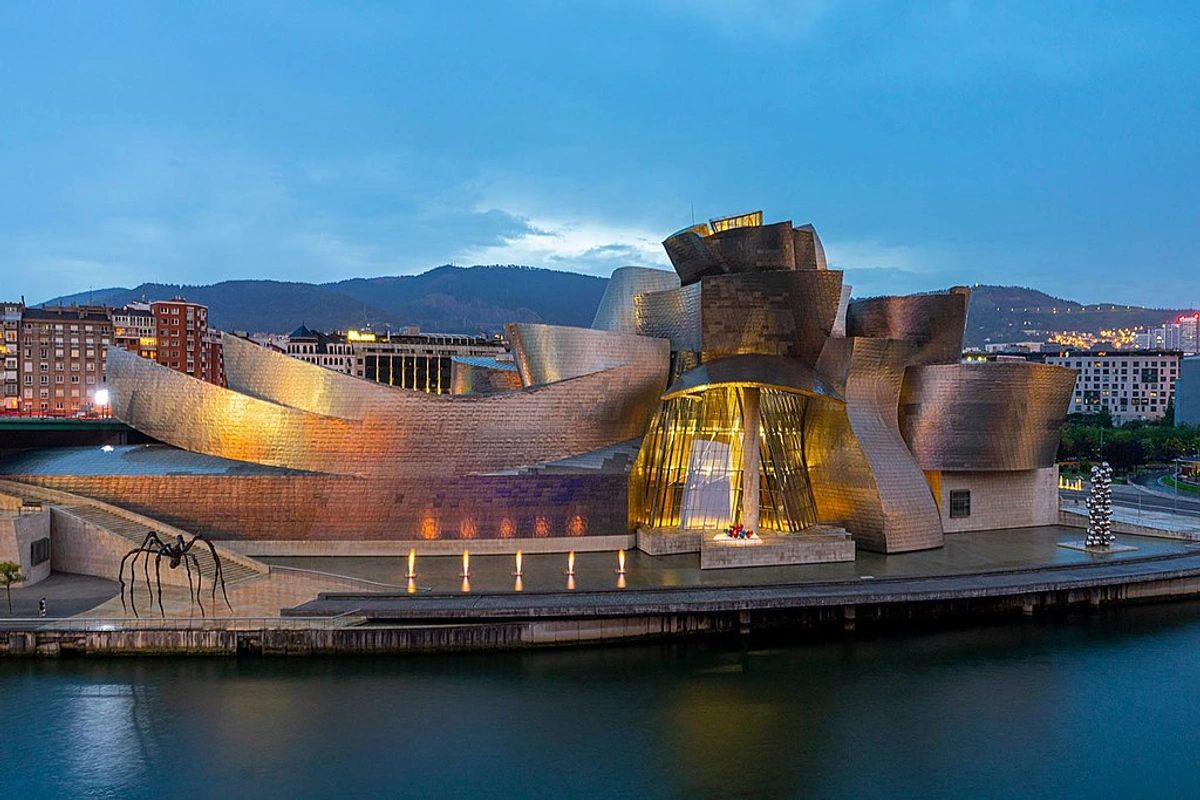
- Gallery Scene: Concentrated in areas like the Eixample (more established galleries), El Born (mix of traditional and contemporary), and Poble Sec/Sant Antoni (emerging spaces). The scene is growing and diverse, reflecting the city's creative energy, featuring Catalan, Spanish, and international artists. While not a primary global market hub, it has a strong local and regional market, particularly during events like Art Barcelona.
- Other Art Experiences: Wander the Gothic Quarter, explore the street art in areas like El Raval and the Gothic Quarter (often political, stencil-based, or character-driven). Artists like Aryz or the collective Boa Mistura have created notable murals. Visit the Design Museum (Disseny Hub Barcelona), take architecture tours focusing on Modernisme or contemporary design. The city's markets (like La Boqueria) are visual feasts in themselves. Combining art visits with the city's incredible food scene is a must. Public sculpture is integrated throughout the city, from historical monuments to contemporary pieces.
- Local Vibe & Digging Deeper: Barcelona is a city to be explored on foot, constantly looking up at the architecture. Book Gaudí sites well in advance. Explore the smaller galleries tucked away in El Born or the emerging areas. Look for local art events and openings via sites like Barcelona Art Guide or gallery websites. The city feels alive with creativity, from the grandest buildings to the smallest street art piece. I remember being completely mesmerized by the light inside the Sagrada Família – it felt like being inside a living, breathing artwork. The vibe is one of vibrant creativity and architectural wonder.
- Pros: Unparalleled architectural art; strong Picasso and Miró collections; vibrant street art; growing contemporary scene; excellent food culture; beautiful city; influential art faculty.
- Cons: Can be very crowded, especially at Gaudí sites; contemporary scene is still developing compared to London or Berlin; can be expensive.
European Art Cities: At-a-Glance Comparison
City | Key Era/Strength | Top Museum Example(s) | Contemporary Scene Vibe | Key Gallery District(s) | Major Art Fair? | Top Gallery Example | Key Art School | Architectural Highlight | Street Art? | Photography Focus? | Best for [Niche] | Art Education Impact |
|---|---|---|---|---|---|---|---|---|---|---|---|---|
| Paris | Old Masters, Impressionism, Modern | Louvre, Orsay, Pompidou | Established & Growing | Le Marais, St-Germain, Belleville | Paris+ par Art Basel | Thaddaeus Ropac | École des Beaux-Arts | Art Nouveau, Haussmann | Growing | Strong | Historical Depth & Classic Masterpieces | Fuels traditional & modern practices, attracts international talent. |
| London | Diverse (Classic, British, Contemporary) | National Gallery, Tate Modern | World-Leading Market | Mayfair, Shoreditch, Fitzrovia, South London | Frieze London | Gagosian | RCA / Goldsmiths | Mix (Historic/Modern) | Vibrant | Strong | Global Contemporary & Free Museums | Drives experimental & critical contemporary art, feeds into the market. |
| Berlin | Contemporary, Street Art, Experimental, Video/Perf | Hamburger Bahnhof, Berlinische | Dominant & Dynamic | Mitte, Kreuzberg, Neukölln | Gallery Weekend, Art Week | Neugerriemschneider | UdK Berlin | Bauhaus, Modern | Dominant | Strong | Cutting-Edge Contemporary & Street Art | Fosters experimental, conceptual, and new media art, high concentration of artists. |
| Rome | Antiquity, Renaissance, Baroque | Vatican Museums, Borghese, MAXXI | Smaller but Present | Various (Less Centralized), San Lorenzo | Roma Arte in Nuvola | Gagosian | Accademia di Belle Arti | Ancient, Baroque, Modern | Present | Moderate | Ancient & Baroque History Integrated into City | Maintains links to classical techniques, restoration, and historical engagement. |
| Florence | Renaissance | Uffizi, Accademia | Limited | Oltrarno (Artisans/Contemporary) | Biennale Antiquariato | Eduardo Secci | Accademia di Belle Arti | Renaissance | Minimal | Minimal | Pure Renaissance Immersion | Strong focus on classical techniques, restoration, and art history. |
| Amsterdam | Dutch Golden Age, Van Gogh, Modern/Contemp, Photo | Rijksmuseum, Van Gogh, Stedelijk | Lively & Balanced | Jordaan, Spiegelkwartier, Noord | Unseen Amsterdam (Photo) | Annet Gelink | Gerrit Rietveld Academie | Canal Houses, Modern | Present | Strong | Dutch Masters & Approachable Contemporary Scene | Influences design-oriented, experimental, and new media art practices. |
| Madrid | Spanish Golden Age, 20th C. Spanish Art, Photo | Prado, Reina Sofía, Thyssen | Growing & Vibrant | Salamanca, Malasaña, Lavapiés | ARCOmadrid, PhotoEspaña | Helga de Alvear | Universidad Complutense | Habsburg, Bourbon, Modern | Present | Strong | Spanish Masters & Vibrant Cultural Scene | Contributes to the local contemporary scene, often with Spanish/Latin American focus. |
| Vienna | Viennese Modernism (Klimt/Schiele), Old Masters | Belvedere, Leopold, KHM, Albertina | Solid & Growing | Schleifmühlgasse, MuseumsQuartier | viennacontemporary, Impulstanz (Perf) | Christine König | Academy of Fine Arts | Art Nouveau, Imperial | Moderate | Moderate | Viennese Modernism & Imperial Grandeur | Supports both traditional and contemporary practices, strong in performance art. |
| Barcelona | Architecture, Picasso, Design, Contemporary | Sagrada Família, Picasso, MACBA | Growing & Vibrant | Eixample, El Born, Poble Sec | Art Barcelona | Marlborough | Facultat de Belles Arts | Gaudí (Modernisme) | Vibrant | Moderate | Architectural Art & Vibrant Visual Culture | Fosters new talent, often with focus on design, sculpture, and new media. |
Choosing a City Based on Specific Art Interests
While the major capitals offer broad appeal, certain cities excel in specific niches. If you have a particular passion, focusing on these cities can lead to a more rewarding and in-depth experience. It's about finding your tribe, artistically speaking.
- For Street Art Enthusiasts:
- Berlin: Renowned for its extensive murals (East Side Gallery), graffiti culture, and numerous urban art projects, particularly in districts like Kreuzberg and Friedrichshain. Raw and political, reflecting the city's history. You'll find everything from massive, building-sized murals to intricate stencils and tags. Artists like Blu (though some work is now gone) or the collective Mentalgassi have left significant marks. Berlin's history of division and rapid change created fertile ground for this expressive, often political, art form.
- London: Diverse scene from large-scale murals in Shoreditch and Brixton to Banksy sightings and dedicated street art tours. More commercialised in parts but still vibrant and constantly changing. Shoreditch is a key area, but explore south of the river too for different styles. London's vastness and diverse communities contribute to its varied street art landscape.
- Paris: Growing scene, particularly in the 13th arrondissement (Boulevard Vincent Auriol) and areas like Belleville. Often large-scale, commissioned murals, but also independent work. The 13th is known for its curated, monumental pieces, featuring artists like C215 or Invader. Paris's street art scene is evolving, adding a modern layer to its historic walls.
- Lisbon: Increasingly known for its vibrant tile art ('azulejos') used in contemporary ways and large-scale murals across the city, often with a poetic or narrative quality. The city's hilly landscape creates unique canvases. Look for work by artists like Vhils (known for carving into walls) or Bordalo II (using trash to create animal sculptures). Lisbon's unique architecture and light provide a stunning backdrop for urban art.
- Athens: A city where street art feels deeply integrated, reflecting social and political commentary, especially in areas like Exarcheia and Psyrri. It's raw, powerful, and often speaks directly to current events. The economic crisis fueled a lot of powerful, expressive work here, often featuring political stencils and murals by artists like iNO. Athens' street art is a vital form of public dialogue and expression.

- For Photography Lovers:
- Paris: Hosts the world-leading Paris Photo fair, boasts the Maison Européenne de la Photographie (MEP), Jeu de Paume, and numerous galleries specializing in photography. Arles (nearby in France) hosts the major Les Rencontres d'Arles festival. Paris has a strong focus on both historical and contemporary photography, often with a fine art or fashion bent, featuring works by iconic photographers and emerging talents. Paris's long history as a cultural capital has fostered a deep appreciation for photography as an art form.
- London: The Photographers' Gallery is a key institution, alongside strong photography departments at the V&A and Tate, and dedicated commercial galleries. Major auction houses also handle significant photography sales. London's scene is broad, covering documentary, fine art, and commercial photography, featuring both British and international photographers. London's status as a global hub means its photography scene is incredibly diverse and commercially significant.
- Amsterdam: Foam Fotografiemuseum Amsterdam is a highly respected international institution, and the Unseen Amsterdam fair focuses on new directions in contemporary photography. The Stedelijk also has a strong photography collection. Amsterdam is particularly strong in contemporary and experimental photography, often featuring Dutch photographers and international artists pushing the boundaries of the medium. Amsterdam's design heritage and forward-thinking cultural scene make it a natural fit for innovative photography.

- Berlin: C/O Berlin is a major venue for photography exhibitions, hosting large retrospectives and contemporary shows. Many galleries also focus heavily on photography, reflecting the city's contemporary focus. Berlin's photography scene often has a documentary or conceptual edge, reflecting its history and intellectual climate, featuring artists who engage with social and political themes.
- Madrid: Hosts PhotoEspaña, a major international photography and visual arts festival spreading across numerous venues each summer. The Reina Sofía also has important photographic works. Madrid's focus is broad, encompassing historical, contemporary, and photojournalism, with a strong presence of Spanish and Latin American photographers. PhotoEspaña solidifies Madrid's position as a key destination for photography enthusiasts.
- For Sculpture Aficionados:
- Rome & Florence: Unbeatable for classical and Renaissance sculpture (Michelangelo, Bernini, Donatello) integrated into museums (Borghese, Bargello, Vatican) and public spaces (Piazza Navona, Piazza della Signoria). Seeing these works in their original context is powerful. These cities are living museums of sculptural history.
- Paris: Musée Rodin offers an immersive experience in the artist's former home and garden; sculpture is prominent in the Louvre and Orsay. Contemporary sculpture is also shown in galleries and public spaces, including temporary installations. Paris offers both historical depth and contemporary breadth in sculpture.
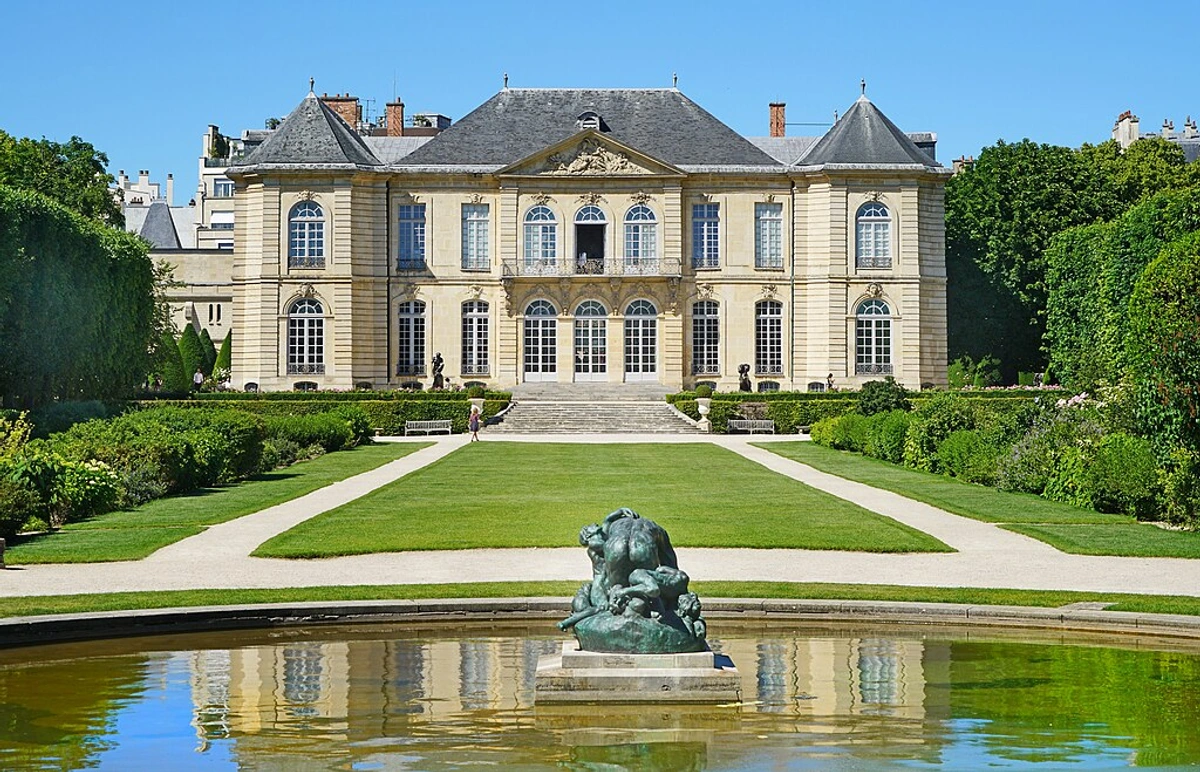
- London: Significant sculpture collections at the British Museum, V&A, Tate. Outdoor installations often feature in parks (like the excellent annual Frieze Sculpture in Regent's Park) and public squares (like the Fourth Plinth). For a dedicated experience outside the city, the Yorkshire Sculpture Park is world-renowned. Considering how to display art at home, including sculpture, can be inspired by these public displays. London's diverse institutions and public spaces make it a strong city for experiencing sculpture in various contexts.
- Bilbao: The Guggenheim itself is a sculptural marvel, and features large-scale outdoor works by Richard Serra and Jeff Koons, making the building and its surroundings a key destination for sculpture lovers. Bilbao demonstrates the power of contemporary sculpture to transform a city.
- Antwerp/Middelheim (Belgium): The Middelheim Museum is an exceptional open-air sculpture park near Antwerp, showcasing modern and contemporary sculpture in a beautiful natural setting. Middelheim offers a unique, expansive environment specifically dedicated to sculpture.
- For Design Devotees:
- Milan: A global capital for fashion and furniture design, particularly during Salone del Mobile. Features museums like the Triennale Design Museum and the impressive Fondazione Prada (Rem Koolhaas architecture housing art & design). Design is integral to the city's identity. Milan is the epicentre of Italian design and a global trendsetter.
- London: The V&A and the Design Museum are world-class institutions covering all facets of design, from historical decorative arts to contemporary product design. Clerkenwell Design Week is a notable event. London's design scene is broad, historical, and internationally influential.
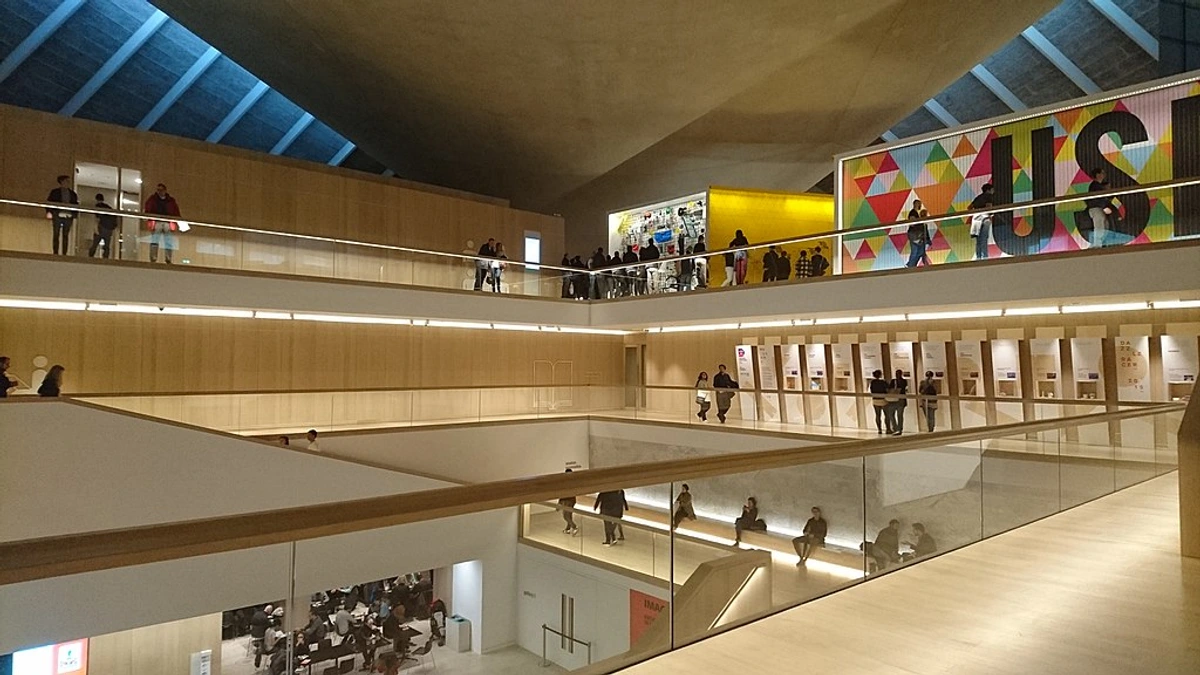
- Amsterdam/Eindhoven (Netherlands): Strong Dutch Design heritage, visible at the Stedelijk (Amsterdam) and particularly prominent in Eindhoven (home to Design Academy Eindhoven and Dutch Design Week). This broader Dutch creativity makes the Netherlands an interesting destination overall, as explored in our guide to the best art cities in the Netherlands. The Netherlands is a hub for innovative and functional design.
- Vienna: Rich history in design from the Wiener Werkstätte to contemporary Austrian design, visible in dedicated sections of museums like the MAK (Museum of Applied Arts). Also, the Art Nouveau architecture of Otto Wagner is integral. Design is part of the city's elegant aesthetic. Vienna offers a unique blend of historical and contemporary design, particularly linked to the Secession era.
- Copenhagen: A key centre for Scandinavian design, with dedicated museums (Designmuseum Danmark) and showrooms showcasing iconic and contemporary Nordic design. Functionality and beauty go hand-in-hand here. Copenhagen is the heartland of influential Scandinavian design.
- Berlin: While known for art, the Bauhaus Archive / Museum of Design (check current status/location) is historically significant, and the city has a thriving contemporary design scene, often with an experimental edge. Berlin's design scene reflects its history of innovation and experimentation.
- For Architecture Enthusiasts:
- Barcelona: Gaudí, Gaudí, Gaudí! The surreal, organic forms of Catalan Modernisme are everywhere, from Sagrada Família to Park Güell. Plus the Gothic Quarter and modern additions like Mies van der Rohe's Pavilion. It's a visual feast, a city where architecture is truly art. Consider taking a dedicated architecture tour here. Barcelona is a living, breathing showcase of architectural artistry.
- Vienna: Imperial grandeur meets Art Nouveau (Secession Building, Otto Wagner's stations and Postsparkasse) and influential early modernism (Adolf Loos's Looshaus). A city of distinct architectural layers. Architecture tours can highlight specific periods or architects. Vienna's architecture tells the story of its imperial past and modernist breakthroughs.
- Brussels: The birthplace of Art Nouveau, with Victor Horta's stunning townhouses (like the Horta Museum) alongside grand squares and the Atomium. A surprisingly rich architectural destination. Look for guided tours focusing on Art Nouveau. Brussels is the essential pilgrimage site for Art Nouveau lovers.
- Berlin: A city scarred and rebuilt, offering layers of history from Prussian classicism (Museum Island) to Bauhaus experiments, Nazi monumentalism, Cold War divisions (check remnants of the Wall), and cutting-edge contemporary architecture (Foster's Reichstag, Libeskind's Jewish Museum). A fascinating architectural palimpsest. Architecture tours often focus on specific historical periods or modern developments. Berlin's architecture is a powerful reflection of its complex history.
- Rome: An unparalleled open-air museum of Western architecture, from Roman ruins (Colosseum, Forum) through Renaissance and Baroque masterpieces (St. Peter's Basilica, Bernini's fountains) to modern statements like the MAXXI. Every corner tells a story. Historical architecture tours are abundant. Rome offers an unparalleled journey through millennia of architectural history.
- Rotterdam: Largely rebuilt after WWII, it's a playground for innovative modern and contemporary architecture (Cube Houses, Markthal, Centraal Station). A stark contrast to older European cities, showcasing architectural daring. Modern architecture tours are popular here. Rotterdam is Europe's capital for bold, contemporary architectural experimentation.
- For Performance & Video Art Fans:
- Berlin: A major hub with dedicated festivals like Transmediale (art & digital culture), countless independent venues, and strong programming at institutions like Hamburger Bahnhof and performance centres like HAU Hebbel am Ufer. You stumble upon performance art here; it feels integrated into the city's experimental spirit. Berlin is the leading city for experimental performance and video art.
- London: Tate Modern's Tanks are dedicated spaces, institutions like the ICA (Institute of Contemporary Arts) have strong programmes, and numerous galleries integrate video/performance. Festivals like LIFT (London International Festival of Theatre) often feature art-world crossovers. The scene is diverse and well-supported. London offers a diverse and well-supported scene for performance and video art.
- Amsterdam: Stedelijk Museum often features video installations, and the city has a lively experimental scene supported by spaces like W139 and festivals. The Dutch scene is strong in new media. Amsterdam is a strong centre for new media and experimental performance.
- Vienna: While known for Klimt, it also hosts Impulstanz, a major international dance festival with strong links to performance art, and mumok shows video work. Performance art adds a dynamic layer to the city's cultural offerings. Vienna's performance art scene adds a dynamic, contemporary edge to its historical richness.
Combining Interests: Crafting Your Perfect Art Itinerary
Sometimes you don't just have one art interest, you have several, or you want to combine art with other passions like food, history, or nightlife. Here are a few ideas for city pairings or focuses based on combining interests:
- If you love Renaissance Art AND Incredible Food: Florence and Rome are the obvious choices. Spend your mornings in the Uffizi or Vatican Museums, then dedicate your afternoons and evenings to exploring local trattorias, markets, and culinary tours. Art for the soul, pasta for... well, also the soul.
- If you want Cutting-Edge Contemporary Art AND Vibrant Nightlife: Berlin is your undisputed champion. Spend your days exploring galleries and project spaces in Mitte, Kreuzberg, and Neukölln, then dive into the city's legendary nightlife. Art and electronic music – a classic Berlin pairing.
- If you're into Old Masters AND World-Class Theatre/Performance: London offers the National Gallery and Tate Britain alongside the West End and countless smaller theatres and performance venues. You can see a Rembrandt in the afternoon and a groundbreaking play or dance piece in the evening.
- If you appreciate Architectural Art (especially Art Nouveau) AND Coffee House Culture: Vienna is perfect. Spend your days admiring Otto Wagner's buildings and the Secession, then relax and discuss it all in a traditional Viennese coffee house, just like the artists and intellectuals of the past.
- If you like a mix of History, Modern Art, AND Charming Canals: Amsterdam provides the Dutch Masters at the Rijksmuseum, modern/contemporary at the Stedelijk, and the beautiful, walkable (or bikeable!) canal ring. It's a city that feels effortlessly balanced.
- If you're fascinated by Spanish Masters AND Tapas Culture: Madrid is the place. Immerse yourself in the Prado, Reina Sofía, and Thyssen, then spend your evenings hopping between tapas bars, soaking up the lively atmosphere.
- If you love Unique Architecture (Gaudí!) AND a Beach Vibe: Barcelona is the clear winner. Explore Gaudí's fantastical creations and the city's museums, then unwind on the beach or enjoy the coastal atmosphere. Art and sunshine – a great combination.
- If you seek Affordable Art Discovery AND Historical Charm: Consider cities like Lisbon or Athens. You can explore vibrant street art, emerging gallery scenes, and historical sites without the high costs of the major capitals. It's a chance to find hidden gems and potentially even start an art collection on a budget. These cities feel like they're still being discovered, which is exciting.
- If you're interested in Art Nouveau AND Belgian Culture: Brussels is the obvious choice, with its Horta masterpieces and growing contemporary scene, plus excellent beer and chocolate. Add a trip to Antwerp for its Old Masters (Rubens!) and contemporary art centre (WIELS). A delicious and visually rich pairing.
Beyond the Obvious: Other Notable European Art Destinations & Emerging Hubs
While the cities above are major contenders, Europe's artistic richness extends further. Sometimes the most rewarding experiences are found slightly off the main tourist path, in cities forging their own distinct creative identities. I often find these places less exhausting and more surprising than the big hitters, though maybe that's just me getting older... (and maybe you'll find some affordable original art here too!).
- Venice, Italy: Famous for the Venice Biennale, the world's oldest and most prestigious contemporary art festival, transforming the city every two years. Beyond the Biennale, it offers historical treasures (Doge's Palace, Accademia Galleries), stunning architecture, and major private foundations like the Pinault Collection (Palazzo Grassi, Punta della Dogana) and Fondazione Prada. It's intense, magical, and utterly unique, especially during the Biennale buzz. Even without the Biennale, the city's beauty is an artistic experience. It feels like walking through a dream, albeit a very crowded one during peak times.
- Basel, Switzerland: Hosts Art Basel, arguably the world's leading international contemporary art fair, attracting the global art elite each June. The city also boasts excellent museums like the Fondation Beyeler (a Renzo Piano gem in nearby Riehen) and the Kunstmuseum Basel. It's a serious, high-quality art destination, especially for collectors and those interested in the art market. It's where the serious business of art happens, polished and precise.
- Brussels, Belgium: Strong surrealist heritage (Magritte Museum), a burgeoning contemporary scene (check out WIELS contemporary art centre), affordable galleries (like Xavier Hufkens, Almine Rech), a unique focus on comic strip art (Belgian Comic Strip Center), and stunning Art Nouveau architecture. It feels less frantic than Paris or London, with a cool, understated creative vibe. It's a city that rewards exploration beyond the main squares. It's got a quiet confidence and surprising artistic depth.
- Lisbon, Portugal: Rapidly gaining recognition for its dynamic mix of historical charm, vibrant street art, contemporary galleries (check Marvila district for spaces like Galeria Vera Cortês), and unique museums like the Museu Nacional de Arte Antiga and the Berardo Collection Museum (modern/contemporary). It feels energetic, affordable, and visually stunning, with a unique light that artists have long appreciated. It feels like a city on the rise, buzzing with creative energy.
- Athens, Greece: A city where ancient history meets a raw, energetic contemporary art scene fueled by recent socio-economic shifts. Explore galleries in Psyrri and Metaxourgeio (like The Breeder), discover incredible street art, and visit institutions like the National Museum of Contemporary Art Athens (EMST) alongside the Acropolis Museum. It has a unique edge and a palpable sense of history colliding with the now. It's a city of layers, both historical and artistic. It feels vital and urgent, with art reflecting the city's soul.
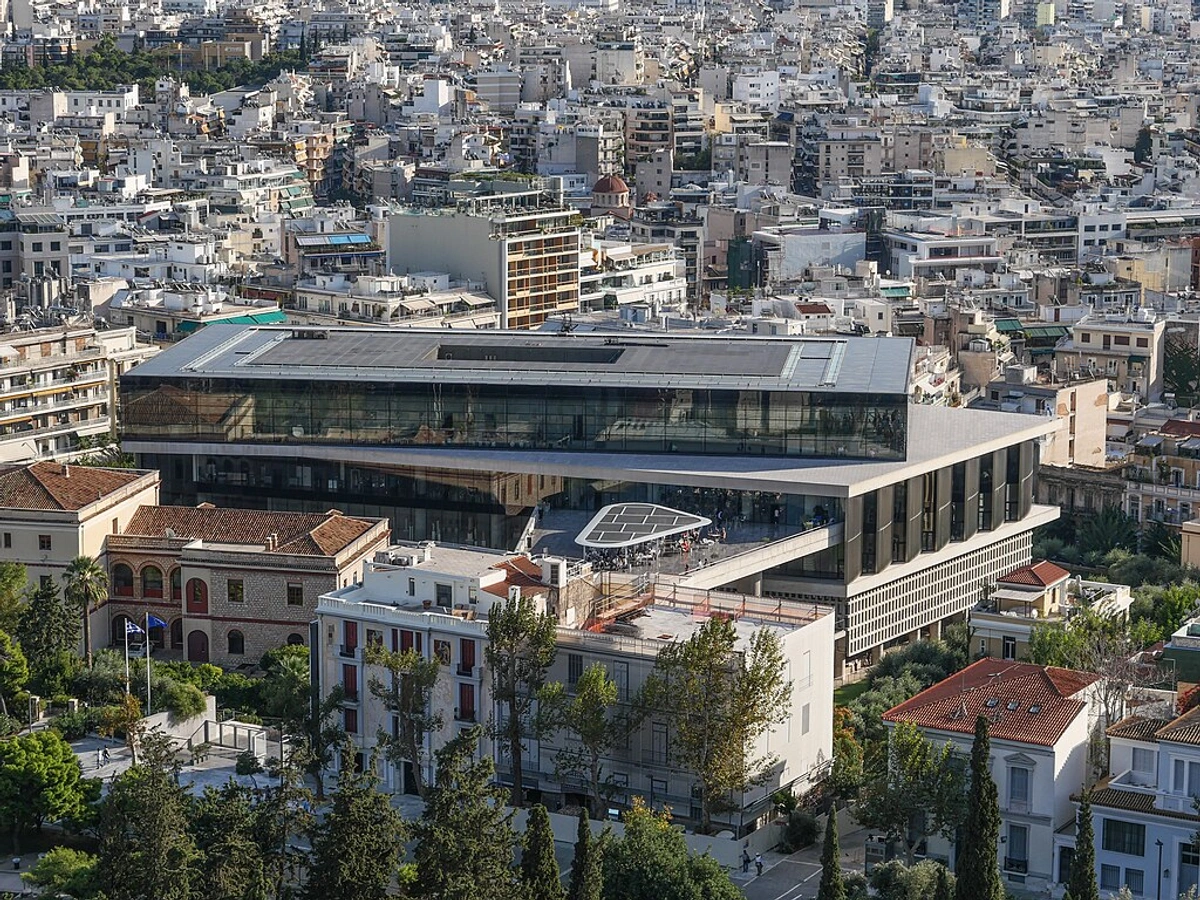
- St. Petersburg, Russia: Home to the immense State Hermitage Museum, one of the largest and oldest museums in the world (geographically Eastern Europe but culturally significant). (Note: Travel advisories should always be checked before planning a trip). A city of imperial grandeur and vast collections. It feels like stepping into a grand, historical painting.

- Bilbao, Spain: Transformed by the iconic Guggenheim Museum Bilbao, a masterpiece of contemporary architecture housing modern and contemporary art. The "Bilbao effect" is real – the museum revitalized the city and put it firmly on the international art map. It's a testament to the power of architecture and art combined. It feels like the future arrived and decided to stay.

- Other Dutch Cities (Netherlands): Beyond Amsterdam, cities like Rotterdam (modern architecture, Kunsthal, Boijmans Van Beuningen Depot), The Hague (Mauritshuis - Girl with a Pearl Earring, Kunstmuseum Den Haag - Mondrian), and Utrecht (Centraal Museum, Rietveld Schröder House) offer significant museums and galleries. 's-Hertogenbosch hosts a unique museum dedicated to contemporary abstract art (Zen Museum) showcasing an artist's progression (timeline) – a more personal deep-dive, perhaps. Exploring the best art cities in the Netherlands reveals a rich national tapestry condensed into a small, easily navigable country. The Netherlands offers a surprisingly dense and diverse art experience.
- Emerging Eastern/Central European Hubs: Don't sleep on cities like Prague, Budapest, Warsaw, and Krakow. They offer rich histories, stunning architecture, and increasingly vibrant contemporary art scenes, often at a lower price point. Think DOX Centre for Contemporary Art in Prague, the Ludwig Museum and Trafó Gallery in Budapest, Warsaw's Museum of Modern Art, Raster Gallery, and Foksal Gallery Foundation, or Krakow's MOCAK (Museum of Contemporary Art). These cities provide a different perspective, often feeling less saturated by the global art market machine and offering surprising discoveries. They feel... energetic, like something exciting is bubbling up. They offer a glimpse into dynamic, evolving art worlds.
- Antwerp, Belgium: Beyond Brussels, Antwerp boasts the recently renovated KMSKA (Royal Museum of Fine Arts Antwerp) with its impressive collection spanning centuries, and a strong contemporary scene centered around institutions like WIELS (though technically in Brussels, it's a key Belgian institution) and galleries like Tim Van Laere Gallery. It's a city with deep historical roots and a forward-looking contemporary edge. It's a city that blends old masters with a cool, contemporary edge.
- Glasgow, Scotland: Known for its vibrant, artist-led scene, numerous independent galleries and project spaces, and the influential Glasgow School of Art. It has a reputation for nurturing experimental and socially engaged practices, offering a different flavour of contemporary art compared to London. It feels authentic and artist-driven.
- Zurich, Switzerland: While Basel hosts the fair, Zurich is a significant art market city with major galleries (like Hauser & Wirth, Galerie Eva Presenhuber) and institutions like the Kunsthaus Zürich. It's a more understated but important player in the global art world, particularly for contemporary art and the market. It's where serious art business meets Swiss precision.
- Dublin, Ireland: Offers a growing contemporary scene, institutions like the Irish Museum of Modern Art (IMMA), and a rich history of Irish art at the National Gallery of Ireland. It feels like a city with a strong literary soul that's increasingly finding its visual voice.
- Edinburgh, Scotland: Known for its vibrant festival scene, including visual arts, and institutions like the Scottish National Gallery and the Scottish National Gallery of Modern Art. It's a city where art feels intertwined with performance and history.
- Nordic Capitals (e.g., Copenhagen, Oslo, Stockholm, Helsinki): While Copenhagen was mentioned for design, these cities collectively offer strong contemporary art scenes, innovative design, and unique perspectives, often influenced by landscape and social themes. Think Louisiana Museum of Modern Art near Copenhagen, the new MUNCH Museum in Oslo, or the Moderna Museet in Stockholm. They offer a cool, minimalist, and often socially conscious art experience.
Art Movements & Where to Find Them in Europe
Sometimes your passion isn't just a city, but a specific style or period. Europe is the birthplace or key location for many major art movements. Here's where to immerse yourself – where I've felt that specific artistic energy most strongly:
- Renaissance: Florence (Uffizi, Accademia, Bargello, Palazzo Pitti) is the absolute heartland. Stepping into the Uffizi feels like time travel. Rome (Vatican Museums, Borghese, churches) is also essential. Look for works by Leonardo da Vinci, Michelangelo, Raphael, Botticelli, Titian.
- Baroque: Rome is the undisputed capital (Caravaggio in San Luigi dei Francesi – seeing his dramatic lighting in situ is unforgettable, Bernini sculptures, Borromini architecture). Vienna (KHM, Belvedere palaces) and Madrid (Prado - Velázquez) also have magnificent Baroque collections. Look for dramatic lighting, intense emotion, and opulent detail.
- Impressionism & Post-Impressionism: Paris is the birthplace (Musée d'Orsay, Musée Marmottan Monet, Musée de l'Orangerie). Visit Giverny (Monet's garden) nearby. Seeing Monet's Water Lilies at the Orangerie is an immersive, peaceful experience. Look for works by Monet, Renoir, Degas, Manet, Cézanne, Van Gogh, Gauguin, Seurat.
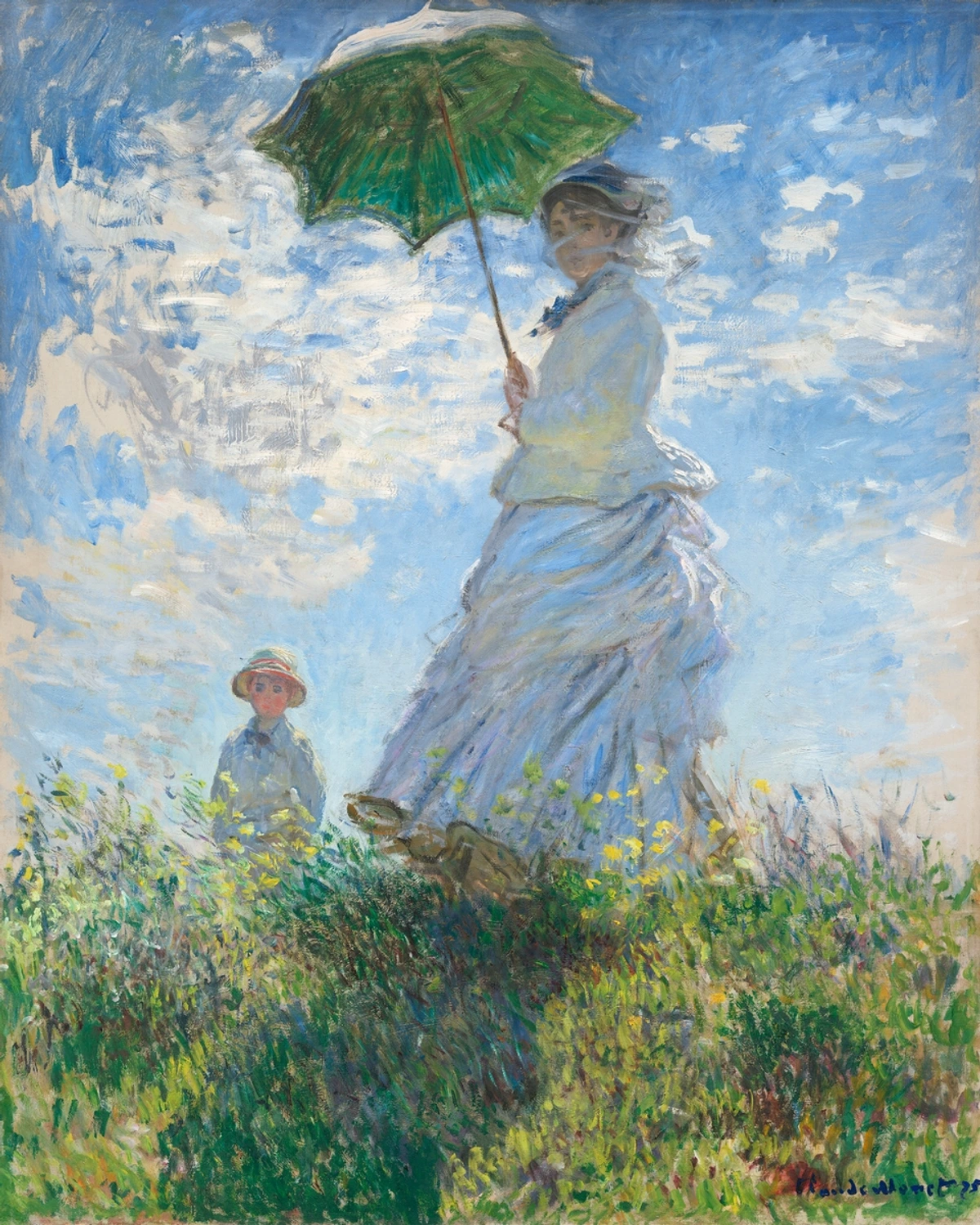
- Art Nouveau (Jugendstil/Modern Style): Brussels (Horta Museum, Horta houses) and Vienna (Secession Building, Otto Wagner architecture, MAK) are key cities. Paris (Guimard Metro entrances) and Barcelona (Gaudí - Catalan Modernisme) also have significant examples. Look for organic forms, decorative lines, and integration of art into daily life. It's art that feels like it's growing out of the buildings themselves.
- Expressionism: While originating in Germany, major collections are found in Berlin (Brücke Museum, parts of Neue Nationalgalerie), Munich (Lenbachhaus - Blue Rider), and Vienna (Leopold Museum - Schiele, Austrian Expressionism). Seeing Schiele's raw, emotional works at the Leopold is incredibly powerful. Look for intense color, distorted forms, and emotional expression.

- Cubism: Paris is the birthplace (Musée Picasso Paris, Centre Pompidou). Look for works by Picasso, Braque, Gris. The fragmentation of form is key. It's like seeing the world through shattered glass, but in a fascinating way.
- Surrealism: Paris was a major centre (Centre Pompidou, Musée Picasso). Brussels has the excellent Magritte Museum. Look for dreamlike imagery, irrational juxtapositions, and exploration of the subconscious. It's art that makes you question reality.
- Bauhaus: While the school was founded in Weimar and later moved to Dessau and Berlin, its legacy is visible in architecture and design across Germany, particularly Berlin. The Bauhaus Archive is a key institution (check location). Look for functional design, geometric forms, and the integration of art, craft, and technology. It's art that aimed to reshape daily life.
- Abstract Expressionism & Post-War Abstraction: Major collections are found in London (Tate Modern), Berlin (Hamburger Bahnhof), and Paris (Centre Pompidou). The Fondation Beyeler near Basel also has significant works. Look for large-scale canvases, gestural brushstrokes, and non-representational forms. My own work, available here, often draws on abstract principles, so I find these collections particularly inspiring – seeing the scale and texture in person is crucial.
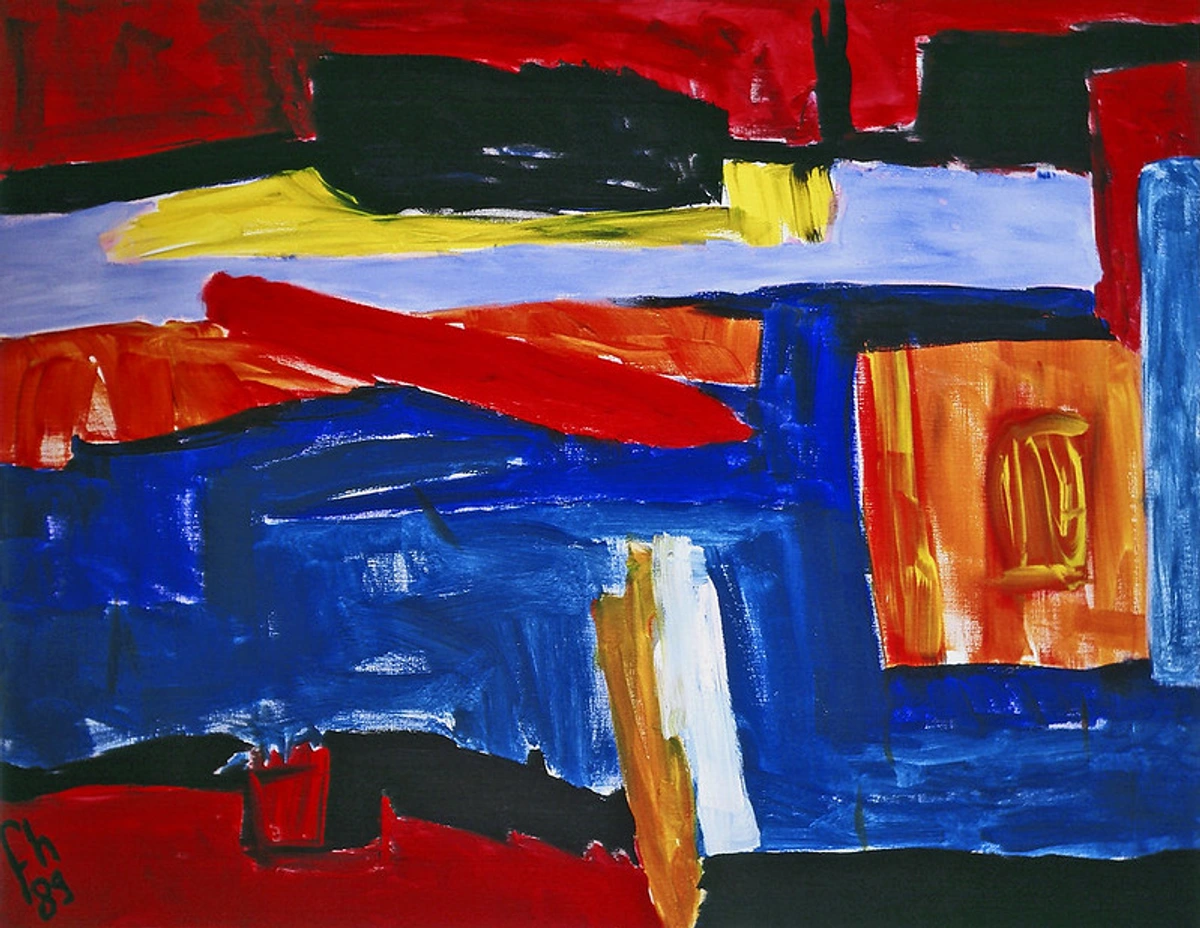
- Contemporary Art (Post-1970s): Berlin is arguably the most dynamic hub, followed closely by London and Paris. Cities like Brussels, Lisbon, Athens, and cities in Eastern/Central Europe are also increasingly important. Look for installations, video art, performance, and diverse media in galleries, project spaces, and biennials. This is where art feels most alive and challenging.
- German Romanticism: Explore cities like Dresden (Gemäldegalerie Alte Meister, Albertinum) and Munich (Neue Pinakothek, Schackgalerie) for works by artists like Caspar David Friedrich. Look for evocative landscapes, emotional intensity, and a focus on nature and the sublime. It's art that makes you feel small and connected to something vast.
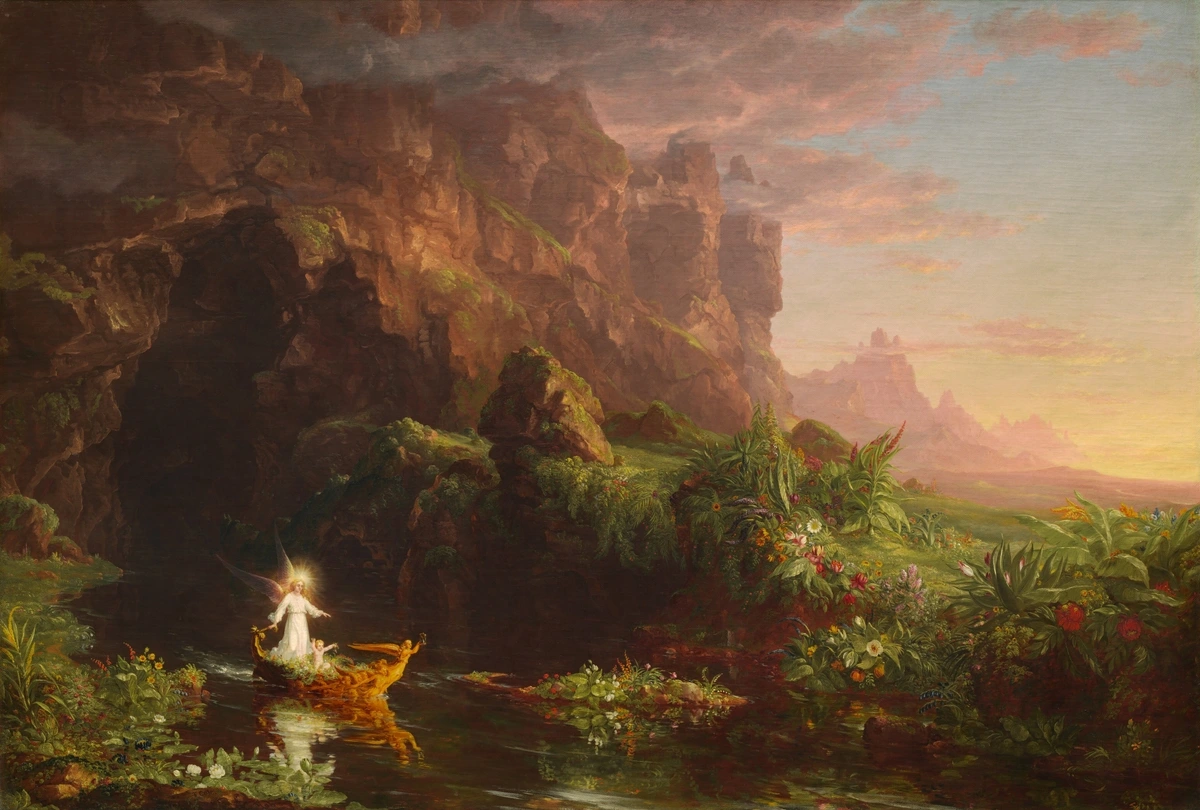
- Dada: While originating in Zurich (Cabaret Voltaire), its influence spread. Look for Dadaist works in major modern art collections in Paris (Pompidou), Berlin (Berlinische Galerie), and London (Tate Modern). Look for anti-art gestures, collage, absurdity, and political commentary. It's art that delights in chaos and challenges convention.
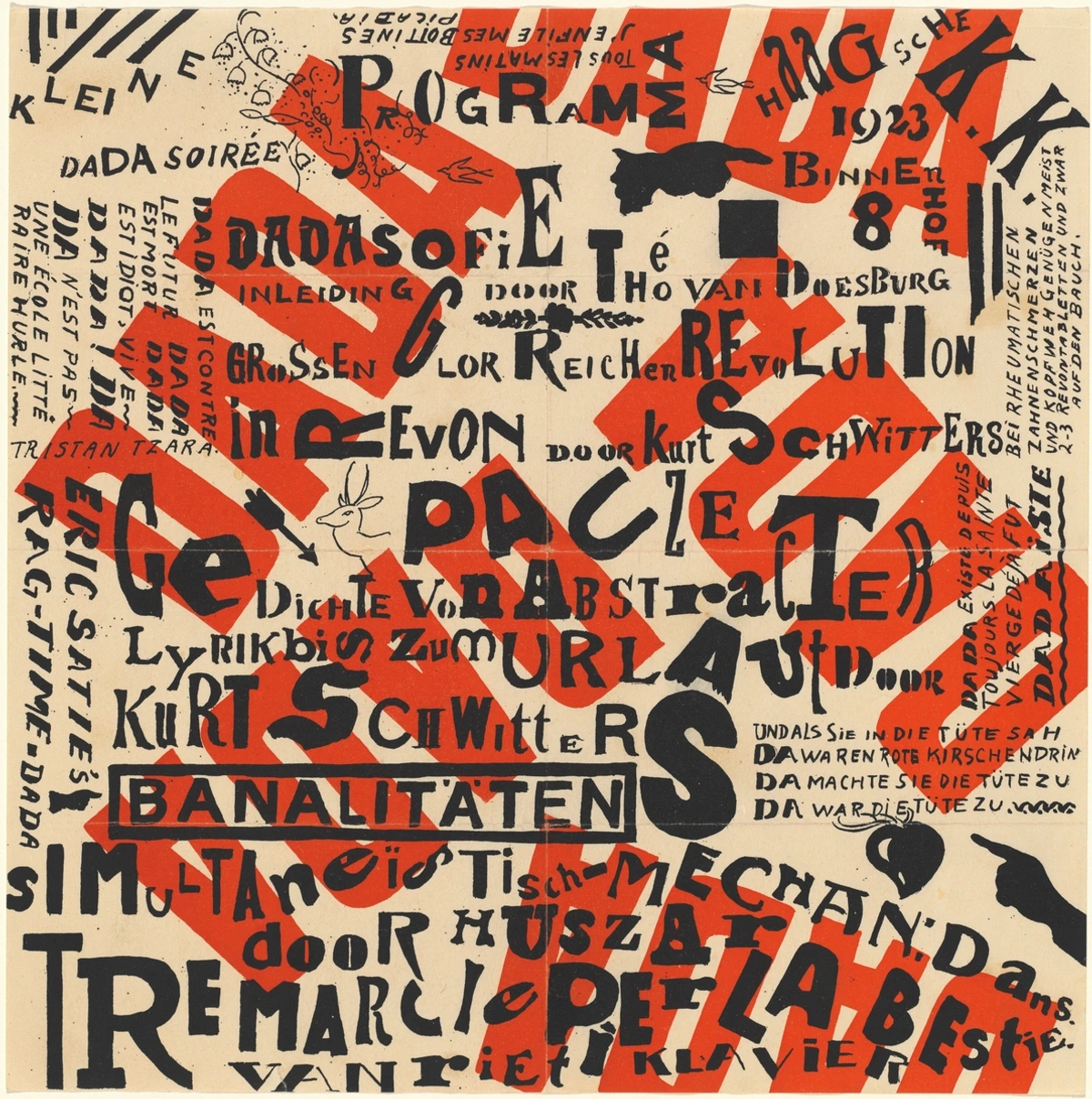
- Fluxus: This international movement had strong ties to Germany and Eastern Europe. Look for Fluxus works and archives in cities like Wiesbaden (Fluxus Archive), Berlin, and within contemporary art collections across Europe. Look for performance, events, conceptual art, and a blurring of art and life. It's art that asks you to participate and think differently about everyday actions.
Planning Your European Art Trip: Practical Tips
Okay, you're inspired. You've maybe even narrowed it down (or maybe just added five more cities to the list, happens to the best of us). Now for the slightly less romantic, but equally crucial, planning part. Making the most of your art-focused travels requires a bit of forethought. I've learned these lessons, often the hard way, so hopefully, they save you some headaches!
When to Go? Timing Your Art Pilgrimage
- Shoulder Seasons (Spring & Autumn): Generally the sweet spot. Weather is often pleasant, crowds are thinner than summer, and the full program of exhibitions is usually running. Think April-May and September-October. Perfect for strolling between galleries without melting or freezing. Many major biennials and art fairs also happen in autumn. This is my personal favorite time to travel for art.
- Summer (June-August): Peak tourist season. Expect crowds, higher prices, and potentially long queues (even with booked tickets sometimes). However, you get long daylight hours and many outdoor art events or festivals (like Frieze Sculpture or PhotoEspaña). Cities can be very hot, especially in Southern Europe. My personal experience? Trying to see Rome in August is... an exercise in heat tolerance. Pack light and stay hydrated!
- Winter (November-March): Fewer crowds and lower accommodation prices. Great for cosy museum days. Some smaller galleries might have reduced hours. Major cities still have plenty going on, but outdoor art exploration might be chilly! Check for major art fairs which often happen outside peak summer (e.g., Frieze London in Oct, ARCOmadrid in Feb). Christmas markets can add a different kind of visual feast.
Defining Your Interests & Researching Ahead
- Define Your Interests: Seriously, what gets you excited? Are you chasing Renaissance frescoes, vibrant street art, minimalist sculpture, edgy video installations, or perhaps specific architectural styles? Prioritize cities that align with your passions. Use tools like our guide on how to define your personal art style and taste. Be honest with yourself – if hours in Old Master museums make you glaze over, maybe lean towards Berlin or London. It's okay to have specific tastes! What I've learned is that trying to force yourself to like something just because it's famous is a recipe for art fatigue.
- Research & Book Ahead: Check museum/gallery opening times, especially for smaller venues (they often close Mondays or have odd hours). Book tickets online for major museums (Louvre, Uffizi, Vatican, Anne Frank House, Borghese Gallery are MUST-BOOK-AHEADS) and popular special exhibitions to avoid soul-crushing queues or outright disappointment. Trust me, the Mona Lisa queue is not where you want to spend your precious art time. Check if timed entry slots are required. This is probably the single most important tip for major cities. My personal lesson learned? Don't assume you can just walk into the Borghese Gallery in Rome on a whim. You absolutely cannot.
- Check Temporary Exhibitions: Before you even book your flights, check the websites of major museums and galleries in your target cities for temporary exhibitions scheduled during your potential travel dates. A major retrospective of an artist you love, or a thematic show perfectly aligned with your interests, could be the deciding factor for when or where you go! This is how you catch those truly unique shows.
- Consider City Passes: Many cities offer passes (e.g., Paris Museum Pass, London Pass, I Amsterdam Card) that bundle entry to multiple attractions and sometimes include transport. Do the math! Calculate the entry fees for the places you definitely want to visit. If the pass costs less, great. If not, buying individual tickets might be cheaper, especially if you qualify for concessions (student, senior) or plan to take advantage of free entry times. They offer convenience but aren't always the most economical option for purely art-focused trips. What I've found is they are great if you plan to visit many paid attractions, not just a couple of big museums.
- Check Visa Requirements & Travel Advisories: This might sound obvious, but always check the visa requirements for your nationality for the countries you plan to visit. Also, consult your government's travel advisories for any safety or health concerns, especially if considering destinations like St. Petersburg. Better safe than sorry!
Navigating & Experiencing the City
- Pace Yourself: Art fatigue is real! It's that moment when even a Caravaggio starts to look like just... another painting. Don't schedule six museums in one day. Allow time to absorb what you see, grab a coffee, sit on a bench, and people-watch (which is also art, kinda). Trying to read a painting thoughtfully takes time and mental energy. Less is often more. I always overestimate how much I can really take in before my brain turns to mush – my ideal is maybe two major institutions or a museum and a gallery district per day. Your brain needs time to process all that visual input!
- Mix It Up: Combine museum visits with gallery hopping in a specific neighbourhood, exploring street art, visiting artist studios (if possible during open studio events), or enjoying the city's other cultural offerings like food markets, live music, theatre, or simply wandering aimlessly through architecturally interesting areas. Variety keeps things fresh and prevents burnout. And speaking of food... don't forget to fuel your art exploration! Combining gallery visits with trying local cafes or tapas bars is part of the experience.
- Check Local Listings & Use Apps: Once you know your dates, search for "[City Name] art exhibitions [Month Year]" or check websites like ArtRabbit (great for London, Berlin, NYC etc.), SeeSaw, local city tourism sites, or Timeout. For specific gallery openings (vernissages - these are opening nights, often with free drinks and a chance to meet artists/gallerists), look for resources like Berlin Art Link, Index Berlin, l'Officiel des Galeries & Musées (Paris), Amsterdam Art, ArteInformado (Spain), or local gallery association websites. Using local art maps or apps can be a game-changer for finding smaller, independent spaces that aren't in the main guidebooks. This offers a chance for a more immersive, less touristy experience – plus, potentially free drinks! It's how you find the real pulse of the local scene.
- Consider Art & Architecture Tours: Guided tours focusing on specific art movements, artists' lives, or architectural styles can offer deeper insights than exploring on your own. Look for tours led by art historians or local experts. Many museums also offer their own guided tours or excellent audio guides (sometimes free, sometimes for a fee) which can really enhance your understanding of the collection.
- Check Public Holidays: Museum and gallery opening hours can be significantly impacted by local public holidays. Always check the specific dates for the city you're visiting to avoid disappointment. Nothing is worse than showing up excited only to find the doors locked because it's a national holiday you didn't know about.
- Accessibility: Planning is key if you have mobility requirements. Most major museum websites have dedicated 'Accessibility' or 'Plan Your Visit' sections detailing wheelchair access, lifts, accessible toilets, and sometimes sensory information. Resources like AccessAble (primarily UK) provide detailed venue access guides, while Wheelmap.org offers user-generated accessibility info globally. Don't hesitate to call or email smaller galleries directly to inquire about access before visiting. Accessibility is improving, but it still requires checking ahead.
Getting Around
- Public Transport is Your Friend: Most major European cities have excellent metro/tram/bus systems. Buy multi-day passes or use contactless payment where available. It's usually faster and cheaper than taxis for getting between districts. Learn a few key phrases for buying tickets or asking for directions. What I've learned is that trying to walk everywhere in London or Berlin is a recipe for exhaustion.
- Walk!: Many central art districts (Le Marais, Jordaan, Florence city centre, Mayfair) are best explored on foot. You'll stumble upon hidden gems, see street art, and appreciate the architecture. Wear comfortable shoes – seriously, this is non-negotiable. Your feet will thank you after a day pounding the pavement between galleries.
- Bike Power: Cities like Amsterdam, Berlin, and Copenhagen are incredibly bike-friendly. Renting a bike can be a fantastic way to cover ground and feel like a local. Just watch out for trams and follow local cycling etiquette! It adds an element of freedom to your exploration.
Budget Considerations
Your budget can significantly influence your choice of city and the depth of your art exploration. Let's face it, staring lovingly at a Rembrandt doesn't pay the hotel bill.
- Accommodation & Food: Cities like London, Paris, Amsterdam, Zurich, and Copenhagen tend to be more expensive for accommodation and dining. Cities like Berlin, Lisbon, Madrid, Athens, Prague, or Budapest are generally more budget-friendly. Hostels, budget hotels outside the absolute centre, and apartments (Airbnb/VRBO) can save money. Eating like a local (markets, bakeries, casual eateries) is cheaper than tourist-trap restaurants near major sights. Pack snacks! (My personal mantra). Combining art visits with local culinary experiences – like discussing a painting over tapas in Madrid or a coffee and Sachertorte in Vienna – is part of the fun and can be relatively affordable.
- Museum Entry Fees:
- London: Offers a huge advantage with free entry to permanent collections at most major national museums (National Gallery, Tates, British Museum, V&A etc.). Special exhibitions still require paid tickets (expect entry fees typically ranging from £15 to £30+). This makes London very accessible for budget art lovers.
- Other Cities: Expect entry fees for most major museums (expect entry fees typically ranging from €15 to €25+ is common for top institutions like the Louvre, Uffizi, Prado, Vatican Museums). Look for combined tickets or city passes if visiting multiple paid sites, but calculate if it saves you money first. Sometimes the convenience is worth a little extra cost. Also, always ask about student or senior discounts if applicable – they are often available and can save you a significant amount!
- Free Days/Evenings: Some museums offer free admission on specific days or evenings (e.g., first Sunday of the month in Paris, late-night openings). Research this in advance – they can be very crowded, but it's an option if your budget is tight.
- Affordable Art Scenes & Buying: Cities like Berlin, Lisbon, Athens, and potentially cities in Eastern Europe may offer more accessible gallery scenes with lower price points, making it easier to discover emerging artists or find affordable original art. Starting an art collection on a budget might feel more achievable here. Attending gallery openings (vernissages) is also often a free way to see new art, experience the local scene, and sometimes even meet artists or gallerists – plus, free wine is always a bonus for the budget-conscious art lover! Indicative price ranges can vary wildly, but as a very rough guide:
- Emerging Artists (prints, small works, less established galleries, especially in budget-friendlier cities): You might find pieces under €1000, sometimes even lower for prints or drawings. Check out guides on buying art prints or buying mixed-media art.
- Emerging/Mid-Career (paintings, established galleries, major hubs): Often starts around €1000 - €5000+.
- Established/Blue-Chip (major galleries, London/Paris/Basel): Prices quickly jump to €10,000s, €100,000s, and well into the millions. Understanding how much original art costs is key. Even considering buying art online from artists based in these cities can be a strategy. Remember, though, affordability is relative and constantly changing. You might even find something unique right here! Researching artists is crucial before buying, no matter the price point. Framing buying art as part of the ecosystem, supporting artists, or finding a piece that resonates with your trip can make it feel less transactional. And speaking of supporting artists, make an effort to visit local, independent galleries and artist-run spaces – they are the lifeblood of a city's creative scene!
- Savvy Savings: Utilise free walking tours (tip appropriately!) which often cover historical context and point out public art/architecture. Pack a reusable water bottle. Look for student/senior discounts if applicable. Sometimes, simply sitting in a beautiful museum cafe with a coffee can be an affordable way to soak in the atmosphere without paying full entry if you're short on time or budget. Enjoying the city's public spaces and street art is always free!
Combining Cities Smartly: The Art Itinerary
Europe's train network is fantastic for city-hopping. Consider logical pairings to minimize travel time and maximize art time:
- Paris - Brussels - Amsterdam/Rotterdam: Easily linked by high-speed rail. Covers major classics, modern, contemporary, Dutch Masters, Art Nouveau, and modern architecture. A great trip for diverse interests.
- Florence - Rome: A classic Italian art duo, easily connected by fast train. Renaissance focus followed by Antiquity/Baroque. Add Venice for the ultimate Italian art trifecta (especially during Biennale years). This is an intense history/masterpiece focused trip.
- London - Paris: The Eurostar makes this a breeze. Two heavyweight art capitals back-to-back. Offers a huge range from historical to contemporary.
- Berlin - Prague - Vienna/Budapest: Explore Central/Eastern European contemporary and historical scenes. Trains connect these, though journeys might be longer. A fascinating trip through different histories and art responses, often more budget-friendly.
- Madrid - Lisbon - Barcelona: Good flight or overnight train connections between Madrid and Lisbon, and fast train between Madrid and Barcelona. Explore the Iberian Peninsula's artistic offerings, including Spanish masters, architecture, growing contemporary scenes and unique street art/tile art. A good pairing for warmer months.
- Brussels - Antwerp: Easily connected by a short train ride. Combine Brussels' Art Nouveau and contemporary scene with Antwerp's historical masters and modern art institutions. A great Belgian art mini-break.
- Lisbon - Porto: Explore Portugal's art scene, from Lisbon's street art and contemporary galleries to Porto's vibrant cultural scene and architecture. Connected by train.
- Prague - Budapest: Dive into the rich history and burgeoning contemporary art scenes of these two Central European capitals, easily linked by train. Offers a different perspective on European art history and current trends.
- Fly into one city, out of another ('Open Jaw' ticket): Often more efficient than backtracking. Saves time and sometimes money. Plan your route logically based on geography.
Frequently Asked Questions (FAQ)
Q: Which European city is best for Renaissance art? A: Florence is unparalleled for its concentration of Renaissance masterpieces (Uffizi, Accademia), deeply connected to its history via the Accademia di Belle Arti di Firenze. Rome also has significant Renaissance works, especially within the Vatican Museums and churches.
Q: Which European city is best for contemporary art? A: Berlin is often cited as the top city for cutting-edge, artist-driven contemporary art and a vast gallery scene (e.g., Neugerriemschneider, Eigen + Art), fueled by institutions like the UdK Berlin. London has a larger, more established global contemporary art market (galleries like Gagosian, White Cube) and major institutions like Tate Modern, supported by schools like the RCA. Paris also has a strong and growing contemporary scene centred around Le Marais (Thaddaeus Ropac, Perrotin) and institutions like the Pompidou and Palais de Tokyo, with the École des Beaux-Arts influencing its direction.
Q: Which European city has the most free major art museums? A: London stands out with free entry to the permanent collections of the National Gallery, Tate Modern, Tate Britain, British Museum, V&A, National Portrait Gallery, and Wallace Collection. This makes a huge difference to budget travelers!
Q: Can I easily visit multiple art cities in one trip? A: Yes, Europe's excellent train network (and budget airlines for longer hops) makes combining cities feasible and rewarding. Plan logical routes (see Planning section above) to minimise travel time. An 'open jaw' flight ticket can also save time. Consider pairings like Paris-Brussels-Amsterdam or Florence-Rome.
Q: Is it worth visiting smaller European cities for art? A: Absolutely! Smaller cities often have hidden gems, specialized museums focusing on a particular artist or movement (like the Fondation Beyeler near Basel or the unique contemporary abstract focus at the Zen Museum in the Netherlands), charming local galleries, unique regional art scenes, or significant architectural sites less influenced by global trends. They can offer a more intimate and less overwhelming experience, and are often great places to find and buy art from local artists.
Q: How do I find out about temporary exhibitions and gallery openings when planning my trip? A: Check the official websites of the major museums and galleries well in advance. For gallery openings ('vernissages') and current shows, use online resources like ArtRabbit (multiple cities), SeeSaw, local city tourism sites, or Timeout. For specific gallery openings, look for resources like Berlin Art Link, Index Berlin, l'Officiel des Galeries & Musées (Paris), Amsterdam Art, ArteInformado (Spain), or local gallery association websites. Following galleries on social media also helps.
Q: Which European city is best for street art? A: Berlin is arguably the most famous (Kreuzberg, Friedrichshain, East Side Gallery), featuring artists like Blu and Mentalgassi. London is very diverse (Shoreditch, Brixton), with works by Banksy and others. Lisbon (murals & tiles, artists like Vhils and Bordalo II) and Athens (social commentary, artists like iNO) are strong contenders. Paris has notable large-scale murals (13th arr.), featuring artists like C215.
Q: Are there good art cities in Europe for travellers on a tight budget? A: Cities like Berlin, Lisbon, Madrid, Athens, Prague, or Budapest generally offer lower costs for accommodation and food. London's free museums help significantly. Research free museum days/evenings and utilize city passes strategically. Focus on street art, free gallery openings (vernissages), and enjoying the city's architecture and atmosphere. Exploring affordable original art might also be easier in some of these cities. Remember to ask about student or senior discounts!
Q: Which city is best if I'm interested in buying art? A: For established, blue-chip art: London (Mayfair – Gagosian, Hauser & Wirth) and Paris (Le Marais – Thaddaeus Ropac, Perrotin) are major hubs with top auction houses. Basel (during Art Basel) and Zurich are key. For emerging/mid-career, or potentially more affordable work: Berlin offers a vast scene. Brussels, Lisbon, and cities in Eastern/Central Europe (like Warsaw's Raster Gallery) are increasingly interesting markets with potentially lower entry points (check budget section for indicative ranges). Consider researching how to buy art online too, perhaps finding pieces here. Researching artists is always recommended before buying.
Q: How do I combine my love for art with other interests like architecture, food, music, or history? A: Easy! Great art cities are great cultural cities. Rome/Florence: Art, history, food, architecture galore. Paris: Art, fashion, food, romance, Art Nouveau architecture. Vienna: Art, classical music, Imperial history, coffee houses, Secession/Wagner architecture. London: Art, theatre, music, history, diverse food, architecture mix. Berlin: Contemporary art, techno, 20th-century history, street food, Bauhaus influences/modern architecture. Barcelona: Architecture, art, design, food, beach. Research specific neighbourhoods or movements (e.g., Art Nouveau tours in Brussels, Bauhaus sites in Berlin/Dessau). Look for cultural event listings beyond just art.
Q: Is it safe for a solo traveler to explore European art scenes? A: Generally, yes. Standard precautions apply: be aware of surroundings, secure valuables, avoid poorly lit areas late at night. Stick to main gallery districts during day/early evening. Use reputable transport. Joining walking tours or gallery hops can be good for social exploration. Most major art areas are well-trafficked.
Q: How can I connect with local artists or communities during my trip? A: Attend gallery openings ('vernissages'). Look for 'Open Studios' events (common in London, Berlin). Check local art school exhibition schedules (e.g., UdK Berlin's Rundgang). Follow local artists/galleries on social media. Visit artist-run spaces or collectives. These are great ways to get a feel for the local scene beyond the established institutions. You might even find opportunities to buy art from local artists.
Q: How do I find accessibility information for museums and galleries? A: Check the dedicated 'Accessibility' or 'Plan Your Visit' sections on official museum websites. For broader info, look at resources like AccessAble (UK focused) or Wheelmap.org (global user-generated). For smaller galleries, it's best to call or email ahead to confirm specific access needs. Planning in advance is crucial for a smooth trip.
Q: What's the difference between an Art Fair and a Biennial? A: Art Fairs (like Art Basel, Frieze) are primarily commercial events where galleries sell art, attracting collectors and industry professionals. Biennials (like the Venice Biennale, Manifesta) are large-scale exhibitions, usually curated around a theme, focused on showcasing contemporary art rather than selling it directly. Both are major events offering different experiences.
Q: Which cities are good for combining art with nature or outdoor activities? A: Many cities offer this! Barcelona has beaches and parks (Park Güell is art and nature). Vienna has beautiful parks and is close to the Vienna Woods. Cities near the Alps (like Basel with the Fondation Beyeler) offer stunning scenery alongside art. Even cities like London (Regent's Park for Frieze Sculpture) or Madrid (Retiro Park) integrate art into green spaces. The Netherlands offers flat landscapes perfect for biking between cultural sites.
Conclusion: Discover Your Perfect European Art City
While crowning a single "best" art city in Europe is impossible – and honestly, a bit boring, wouldn't you agree? – Paris, London, Berlin, Rome, Florence, Amsterdam, Madrid, Vienna, and Barcelona all offer profoundly rich and diverse artistic experiences. Each shines in different areas, catering to varied tastes and interests – from street art and photography to sculpture, design, stunning architecture, Old Masters, contemporary installations, performance art, and major art market activity. Powerhouse galleries like Gagosian, Ropac, or White Cube coexist with gritty artist-run spaces. Influential institutions like the École des Beaux-Arts or UdK Berlin shape the next generation. Cities like Lisbon, Athens, Brussels, Antwerp, Glasgow, Zurich, and emerging hubs in Central/Eastern Europe, plus others like Dublin, Edinburgh, and the Nordic capitals, are adding exciting new dimensions to the map.
Ultimately, the best art city for you depends on what you seek – the historical weight of Old Masters, the revolutionary spirit of modernism, the dynamic pulse of the contemporary scene, that specific vibe, a passion for Art Nouveau architecture, or a unique blend tailored to specific interests or budget. It's about finding the place that resonates with your own art inspirations. Use this guide as a starting point, delve deeper into the cities that pique your interest, trust your instincts, and embark on your own artistic exploration. Whether you're gazing at masterpieces in a grand museum, discovering a new talent in a small independent gallery (maybe even finding a piece to buy), finding art unexpectedly on the city streets, contemplating architectural marvels, or checking out the latest performance piece, Europe's art cities promise unforgettable journeys. Enjoy the discovery – and maybe send me a postcard (or a photo of some cool street art)!




